Asus
The Asus ROG Swift Pro PG248QP is an incredibly quick video gaming display created for expert esports players. It boasts a huge 540Hz revitalize rate, acting as a remarkable presentation for the future of high efficiency, high refresh rate screens, which we hope will end up being more available in the coming years.
Presently, if you desire a 500Hz+ screen, it’s LCD panels with either IPS or TN innovation that supply such speeds. Asus has actually selected what they refer to as an “E-TN” panel for this display, or “Esports TN,” declared to be the world’s fastest TN panel and “around 50% more responsive than standard TN panels.” We currently understand that TNs are the fastest kind of LCDs readily available, making them a rational option for a performance-focused display screen, regardless of some sacrifices in color quality and seeing angles.
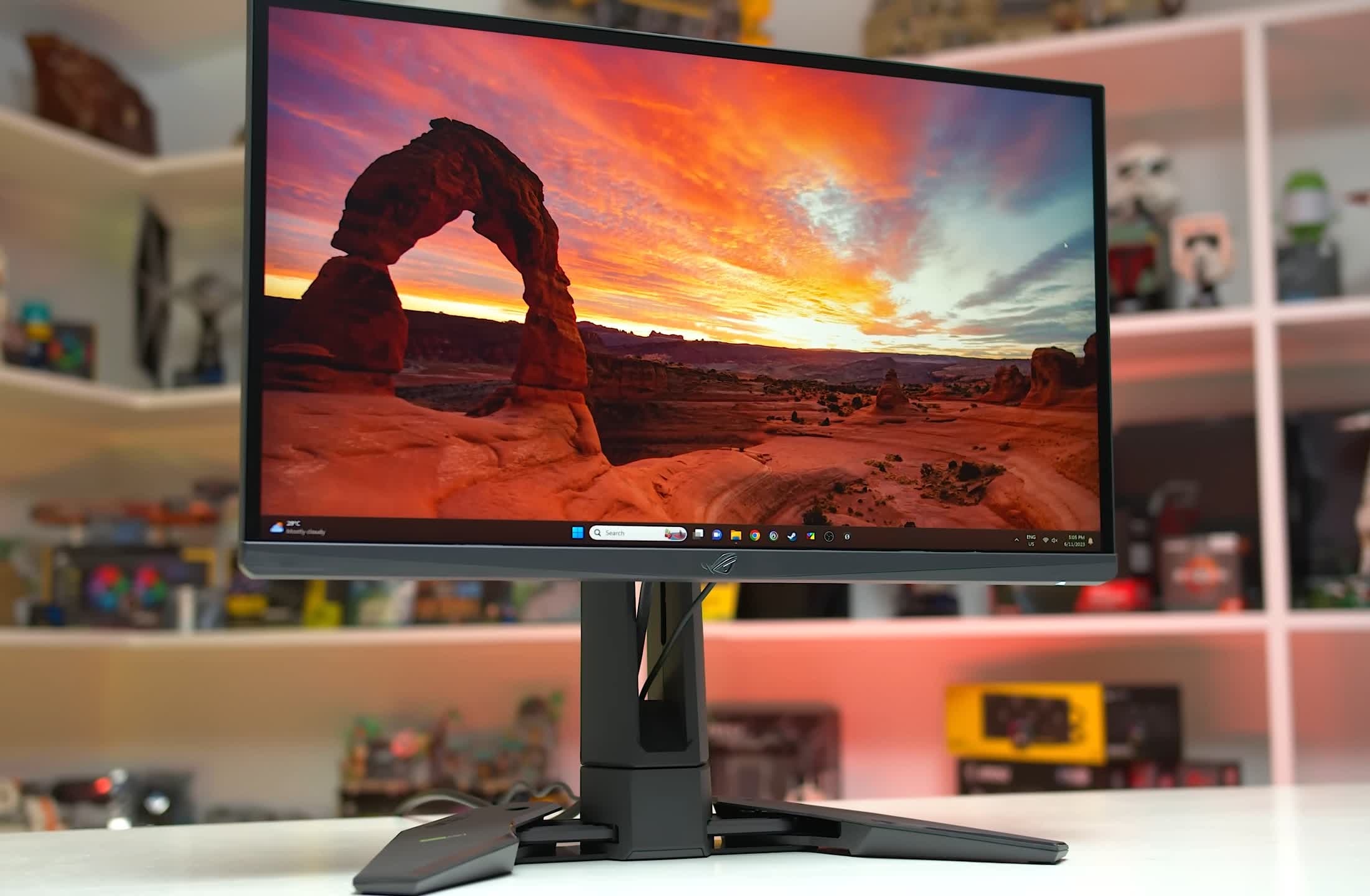
Specifications and Design
This screen includes a 24.1-inch 1920 x 1080 TN panel, with 540Hz possible through an overclocking function in the OSD. It consists of a G-Sync module from Nvidia, offering adaptive sync assistance, Ultra Low Motion Blur 2 innovation, and the Reflex Latency Analyzer. Asus has actually likewise noted DisplayHDR 400 assistance, though real HDR hardware assistance is someplace in between minimal and non-existent.
Priced at $900, we do not anticipate Asus to offer a number of these, other than maybe to a choose couple of multiplayer players that wish to attempt it out and have money to burn. The main objective of this screen appears to be to show the expediency and worth of 500Hz+ revitalize rates, as well as to supply a bit of a halo impact for other Asus displays.

Going over the refresh rate, 540Hz is just supported in the most recent builds of Windows 11. Previous variations of Windows topped at 500Hz, so upgrading to the current variation is needed for complete performance. This is a small concern for many players, however it’s worth keeping in mind for those still on Windows 10 or earlier variations.
We likewise saw distinctions in 540Hz compatibility in between Nvidia and AMD GPUs, potentially due to Nvidia’s exclusive G-Sync hardware module. Essentially, if you have an Nvidia GPU, absolutely nothing to fret about, 540Hz deals with complete variable refresh rate support as much as that optimum. With an AMD GPU, 540Hz likewise works, however you will not get variable refresh rate assistance at that optimum: even if whatever appears allowed, the display stays capped at 540Hz as suggested by its integrated refresh rate counter. It’s just at 500Hz and listed below that you will get complete VRR assistance. Not the most significant offer, 540Hz vs 500Hz is simply an 8% distinction, however something to be knowledgeable about.
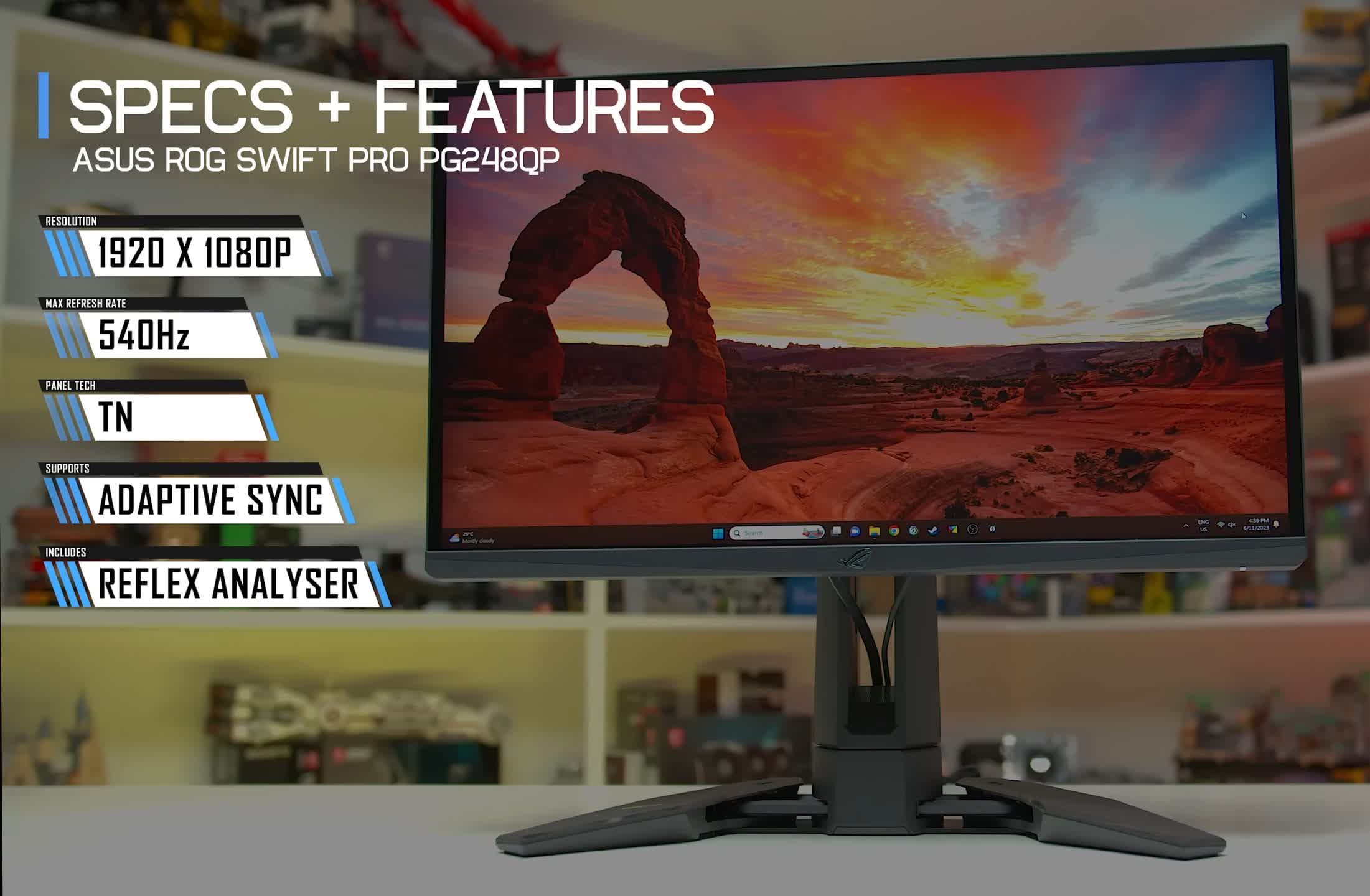
When it comes to the advantages of the refresh rate itself, we’ll see how it affects movement clearness a bit later on in this evaluation, however even utilizing this screen for desktop apps it’s a huge action up for responsiveness and smoothness over the majority of normal refresh rates these days.
Going from 144Hz to 540Hz is night and day, I understand some individuals think that anything above 144Hz is decreasing returns; I disagree, even for something as basic as searching the web and browsing through Windows, 540Hz is considerably smoother and any action you take or input from your mouse feels near-instantaneous in such a way that ends up being crystal clear when returning back to the much slower world of 144Hz.
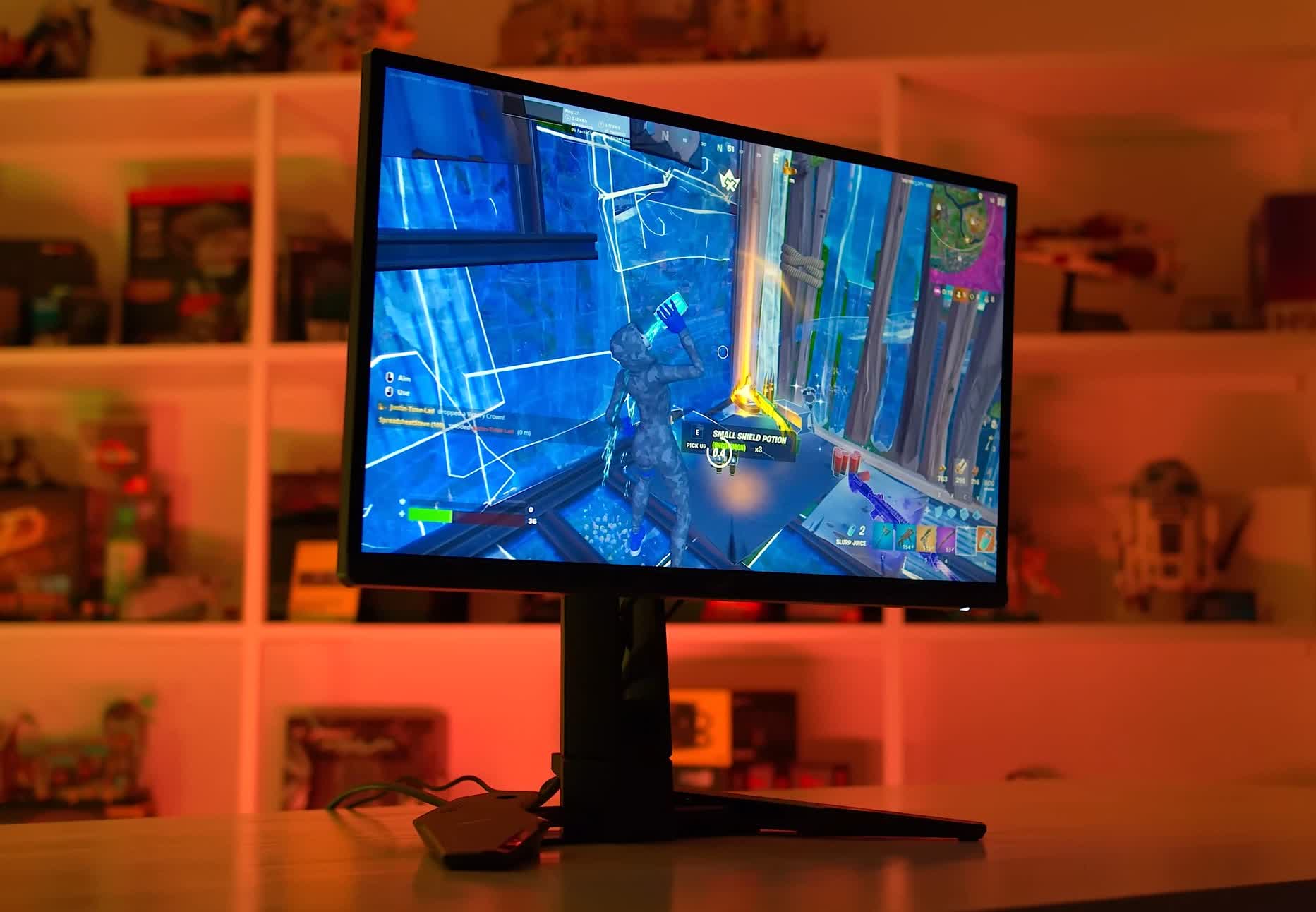
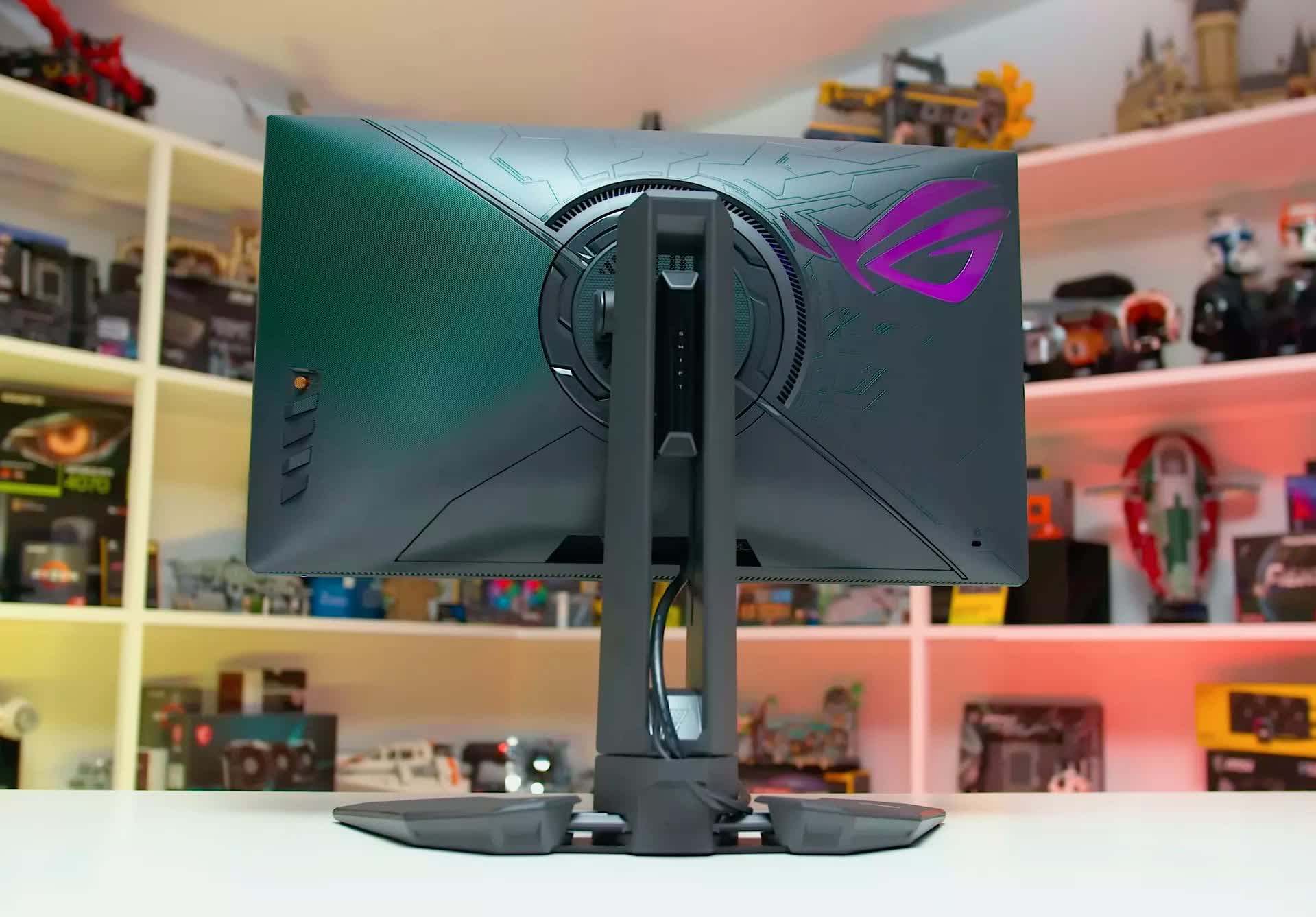
We likewise believe it’s an obvious upgrade over 240Hz, the refresh rate here is more than doubled, which causes a matching enhancement to latency. Less of a gain than from 144Hz definitely, however when comparing 540Hz to 240Hz we believe the weak points in 240Hz ends up being more obvious than when that revitalize rate very first debuted. The only genuine method to explain it is that 240Hz feels slower to utilize than 540Hz– though it’s most likely inadequate of an advantage to validate the huge cost boost to gain access to 540Hz.
The Asus PG248QP utilizes a comparable style to previous ROG screens of this size. The majority of its external surface areas are made from basic grey plastic, which, while sound, does not rather match the anticipated develop quality for a $900 1080p display. The rear panel includes a gamery style with an RGB LED lit up ROG logo design, a typical sight in lots of current displays.


A special and fascinating element to this style is the brand-new base which is adjustable in between a larger setup and a more closed setup. The thinking here is that esports players typically like to utilize quite non-traditional keyboard and mouse positions, so having this level of adjustability accommodates several kinds of players. It’s a smooth and simple shift in between the 2 positions, and you can set any position in between the 2 optimums.
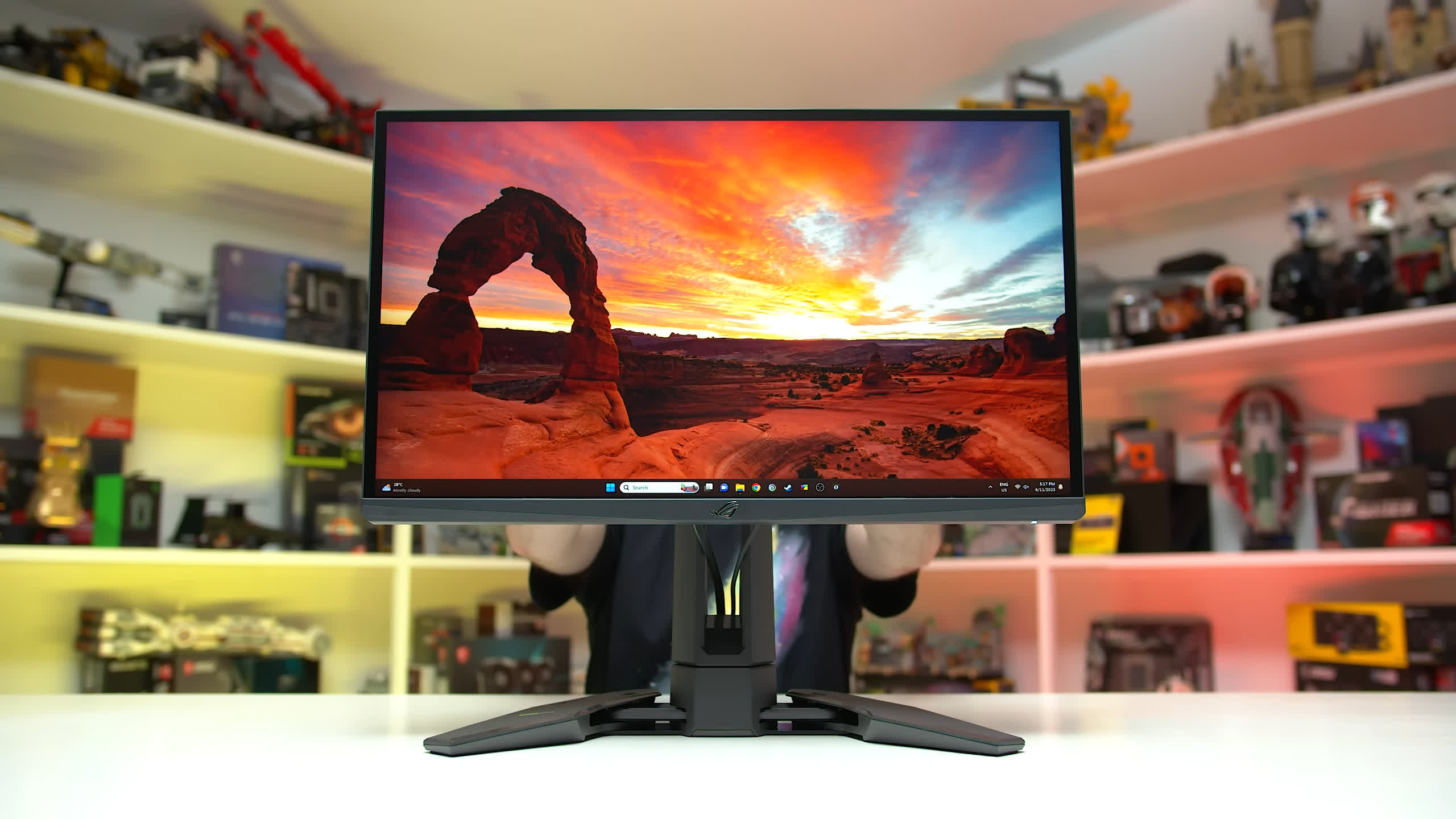
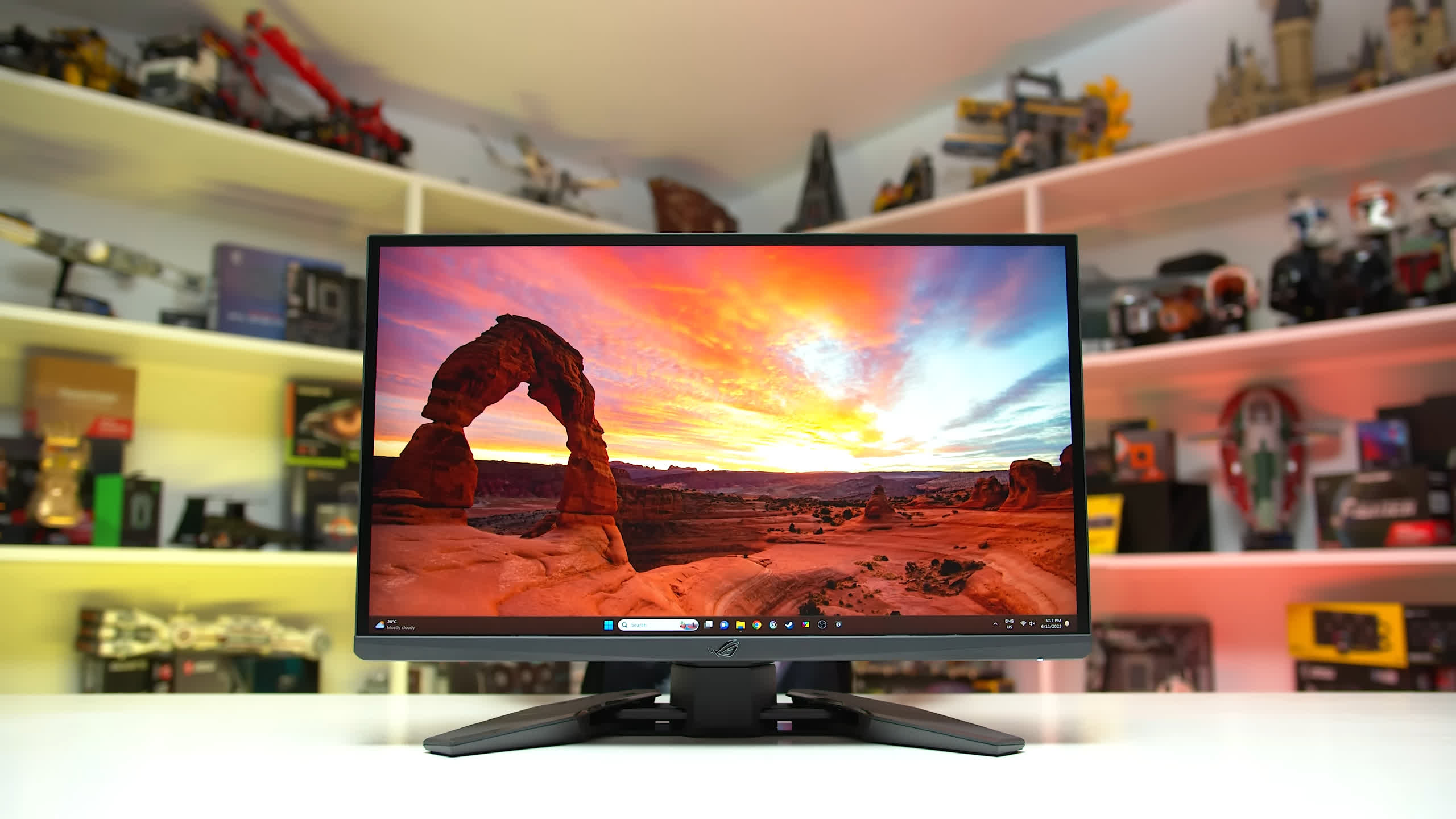
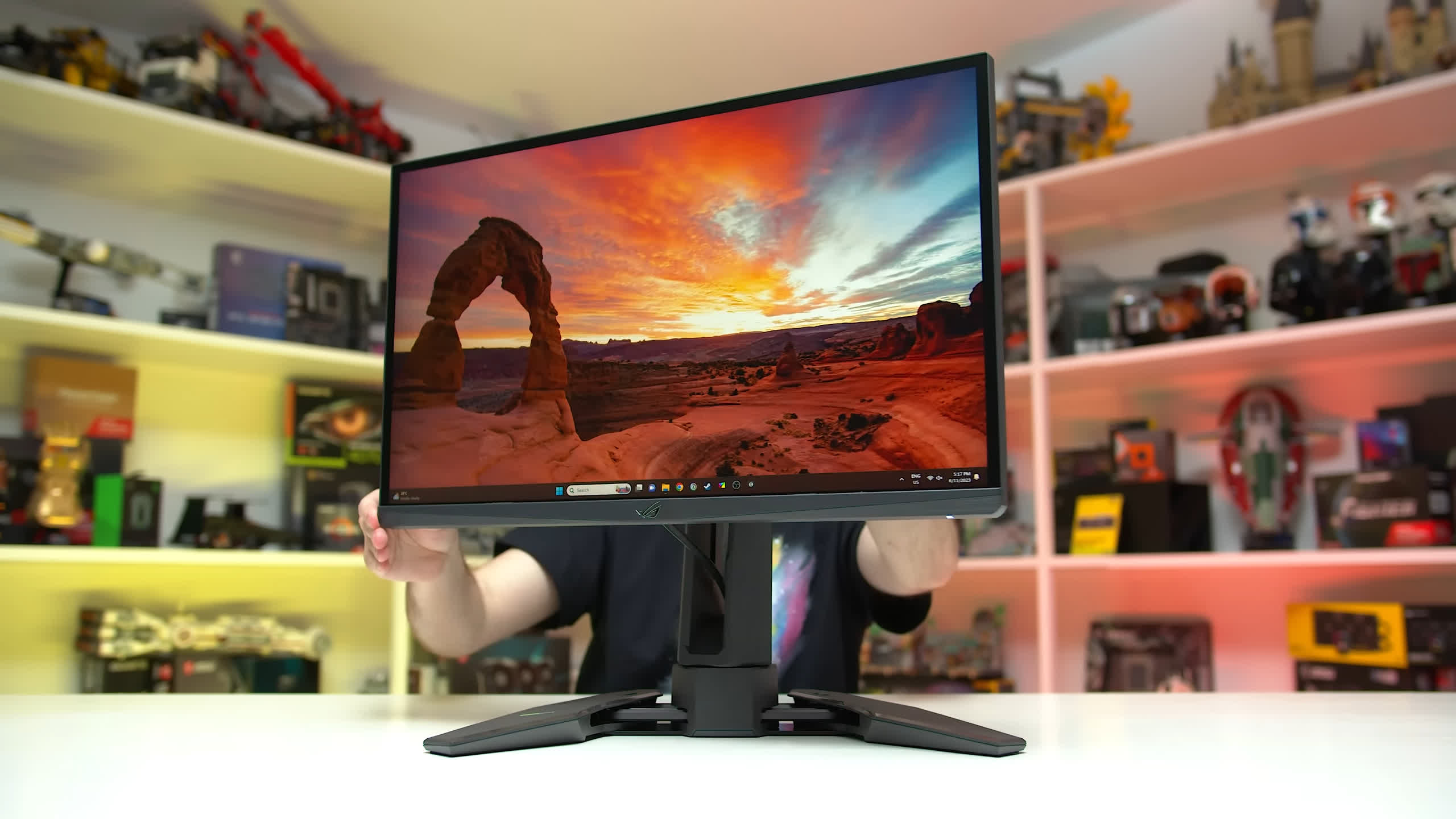
The base style does not jeopardize on the stability of the display however, it’s a rock strong construct that likewise consists of complete ergonomic adjustability for the display screen itself: all of height, tilt, swivel and pivot is consisted of here. The usage of the G-Sync hardware module does equate into active cooling with a sluggish spinning fan that’s audible at close variety.
You may be able to hear it in a dead peaceful space, however I discovered it extremely hard to hear over my PC’s peaceful fans throughout regular operation. The fan didn’t increase and down strongly throughout my time checking it, which is excellent. It’s those modifications in speed and volume that are the most visible and most bothersome; this fan is simply a consistent low speed that’s near inaudible.
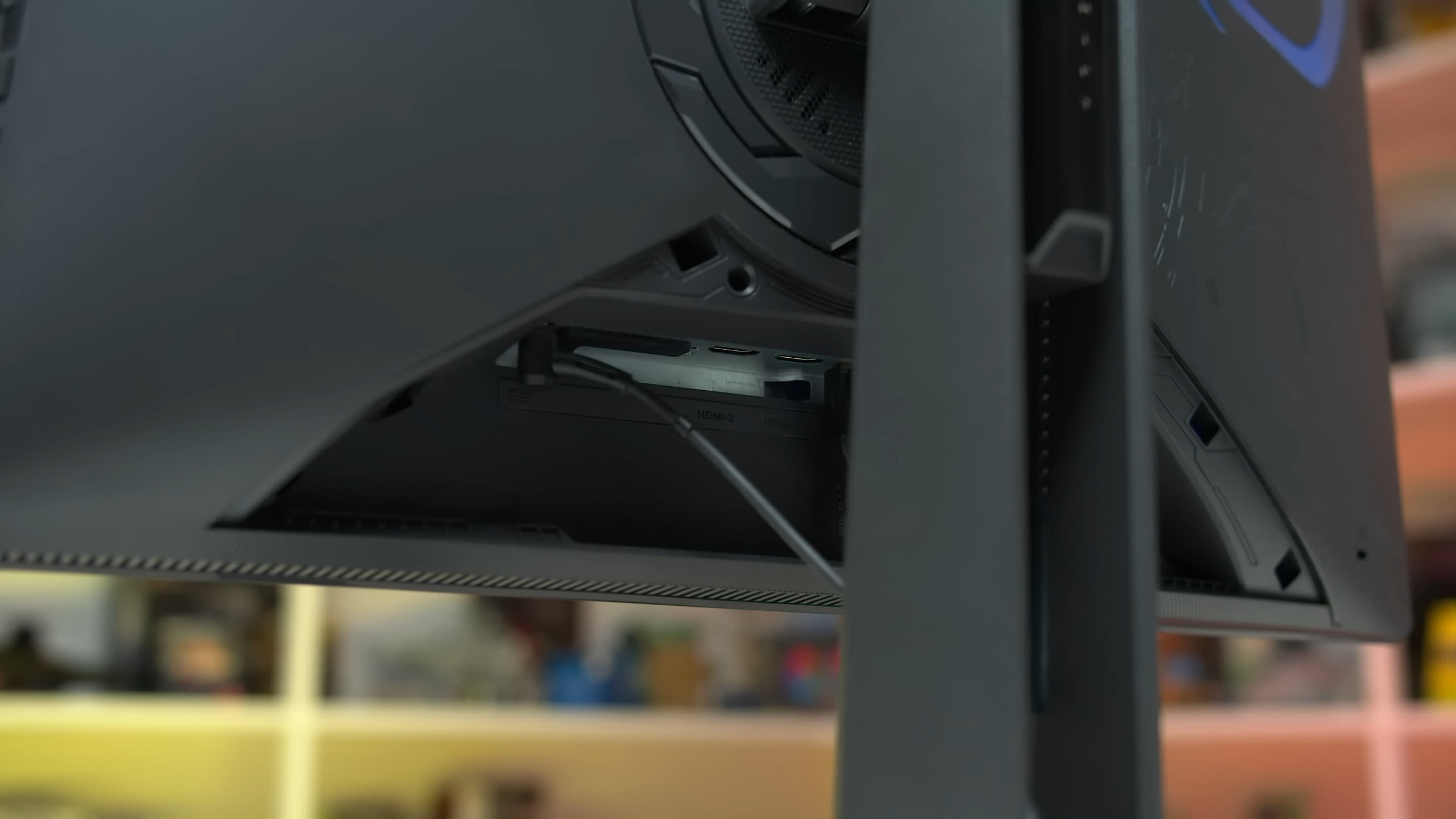
Connection is rather restricted due to the G-Sync module, loading one DisplayPort 1.4 with DSC and 2 HDMI 2.0 ports, in addition to a two-port USB center. The DisplayPort is great, however using HDMI 2.0 on a costly 540Hz display screen is unsatisfactory, as it restricts those ports to simply 240Hz, less than half of the optimum. I presume the majority of people will be connecting over DisplayPort however still, it’s truly about time the G-Sync module is upgraded to support HDMI 2.1 so that all ports are complete refresh rate ports.
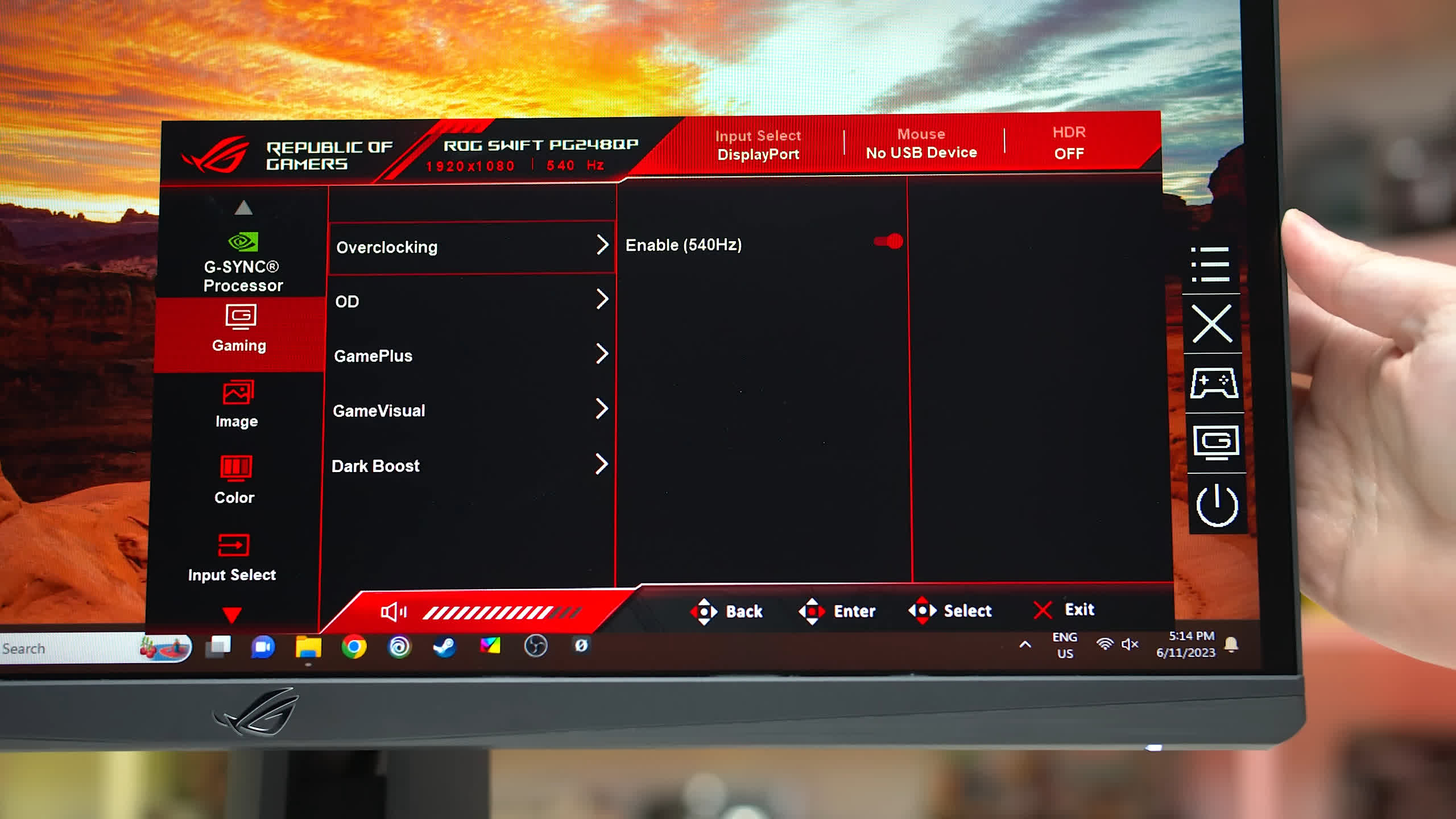
The OSD, managed through a directional toggle, consists of a thorough function set, with gaming-specific alternatives like crosshairs and timers. The addition of crosshair assistance in a screen targeting expert players raises concerns about reasonable play– is that thought about unfaithful? If you’re a professional player, let us understand in the remarks– the Reflex Analyzer, beneficial for Nvidia GPU users, examines overall system latency without requiring external hardware and produces more precise outcomes than PC-side latency tools.
Reaction Time Performance
The Asus PG248QP consists of 4 overdrive settings, the very first of which is off, take a look at the chart below– rather an excellent outcome for no overdrive– this would beat most other screens with overdrive made it possible for. For 540Hz video gaming I believe many individuals will desire to utilize the Normal mode at a minimum.
Asus ROG Swift Pro PG248QP – Off – 540Hz
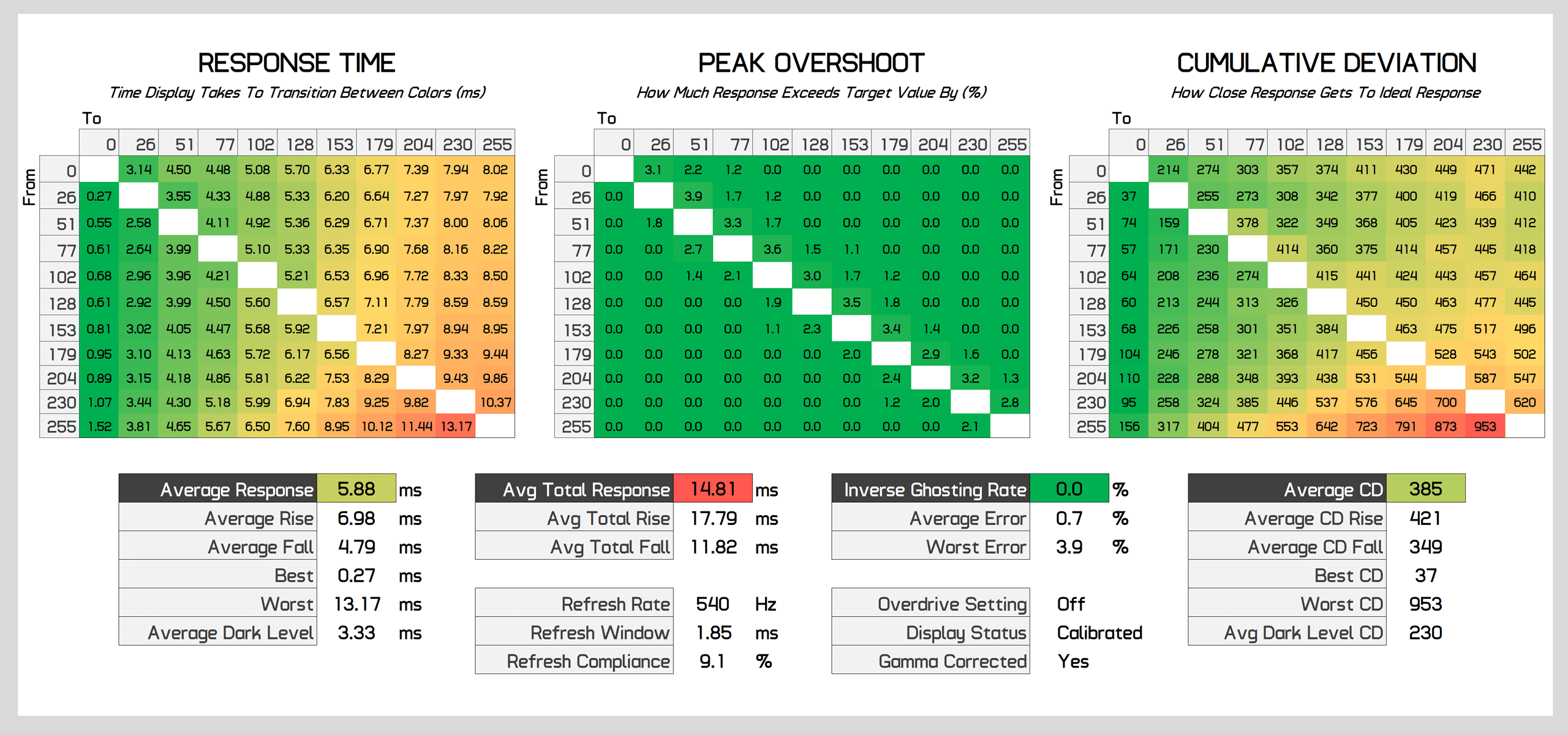
Asus ROG Swift Pro PG248QP – Normal – 540Hz

This is what the Normal mode appears like, it’s exceptionally quickly. With simply a 1.8 ms typical reaction time and beside no overshoot, the PG248QP is extremely fit to dipping into 540Hz with refresh compliance at 86%. Typically the interest in these very high refresh rate displays is that the shift speed isn’t quick sufficient to stay up to date with the refresh rate however that definitely isn’t the case here, even with our reasonably stringent measurement requirements. This results in extremely low cumulative discrepancy for an LCD.
Asus ROG Swift Pro PG248QP – Esports – 540Hz
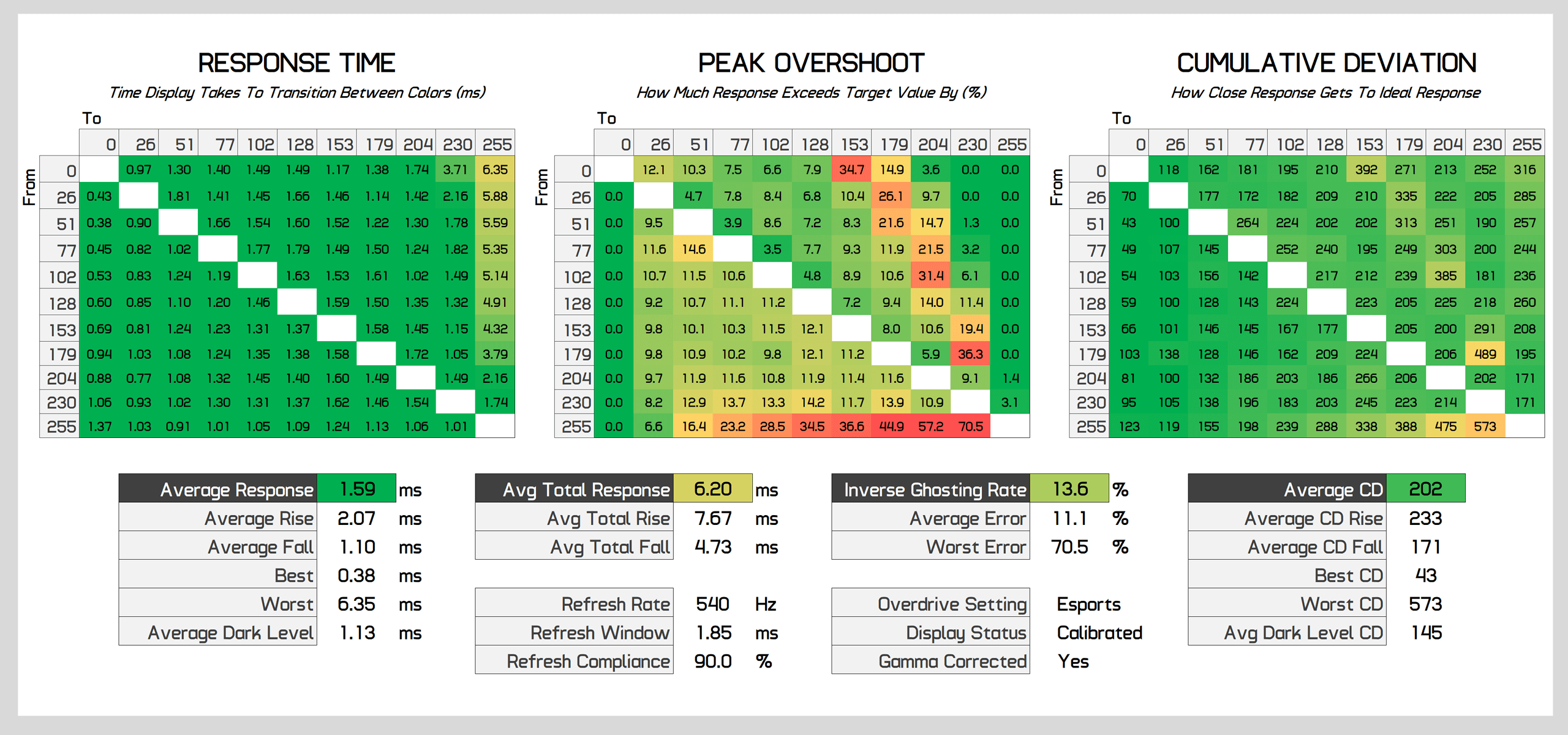
Asus ROG Swift Pro PG248QP – Extreme – 540Hz
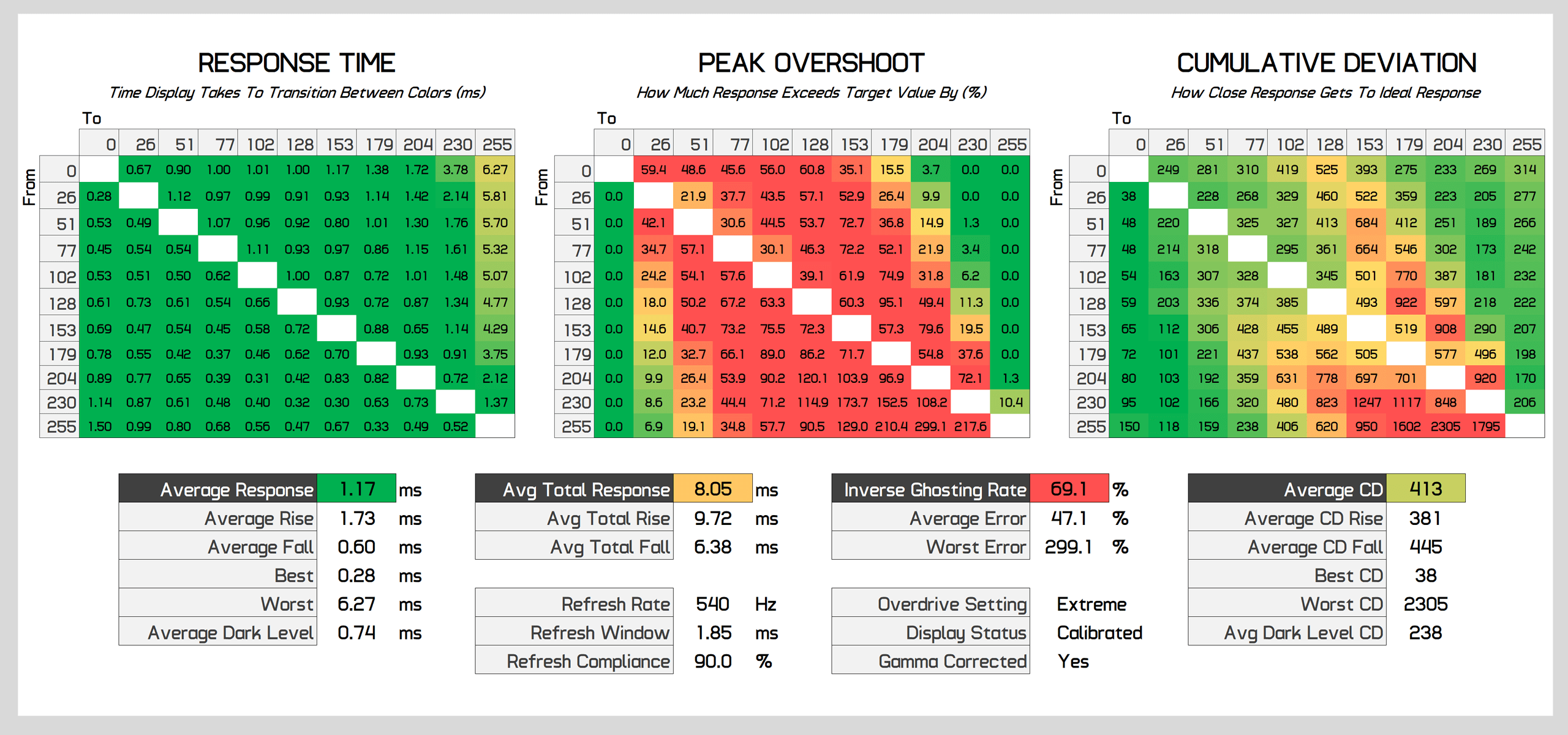
There are 2 other modes offered, one is Esports which somewhat enhances the typical action to 1.6 ms however likewise a little increases overshoot. Aesthetically this mode isn’t all that various to Normal and the cumulative discrepancy numbers are close. We have the Extreme mode which presses up to 1.2 ms on average, however does so at a much greater level of overshoot, so I would not suggest utilizing this mode.
Asus ROG Swift Pro PG248QP – Normal – 480Hz, 360Hz, 240Hz, 144Hz, 100Hz, 60Hz
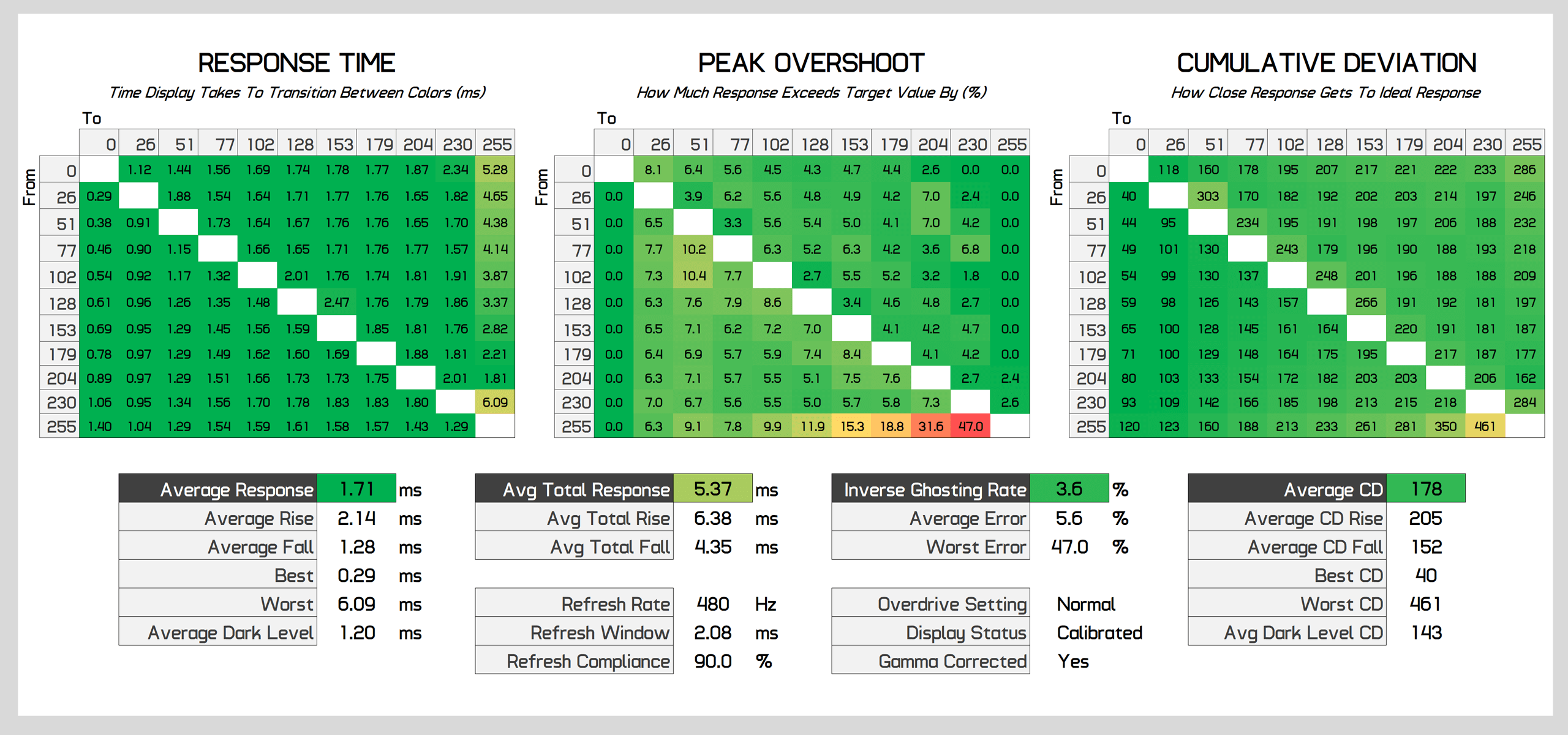
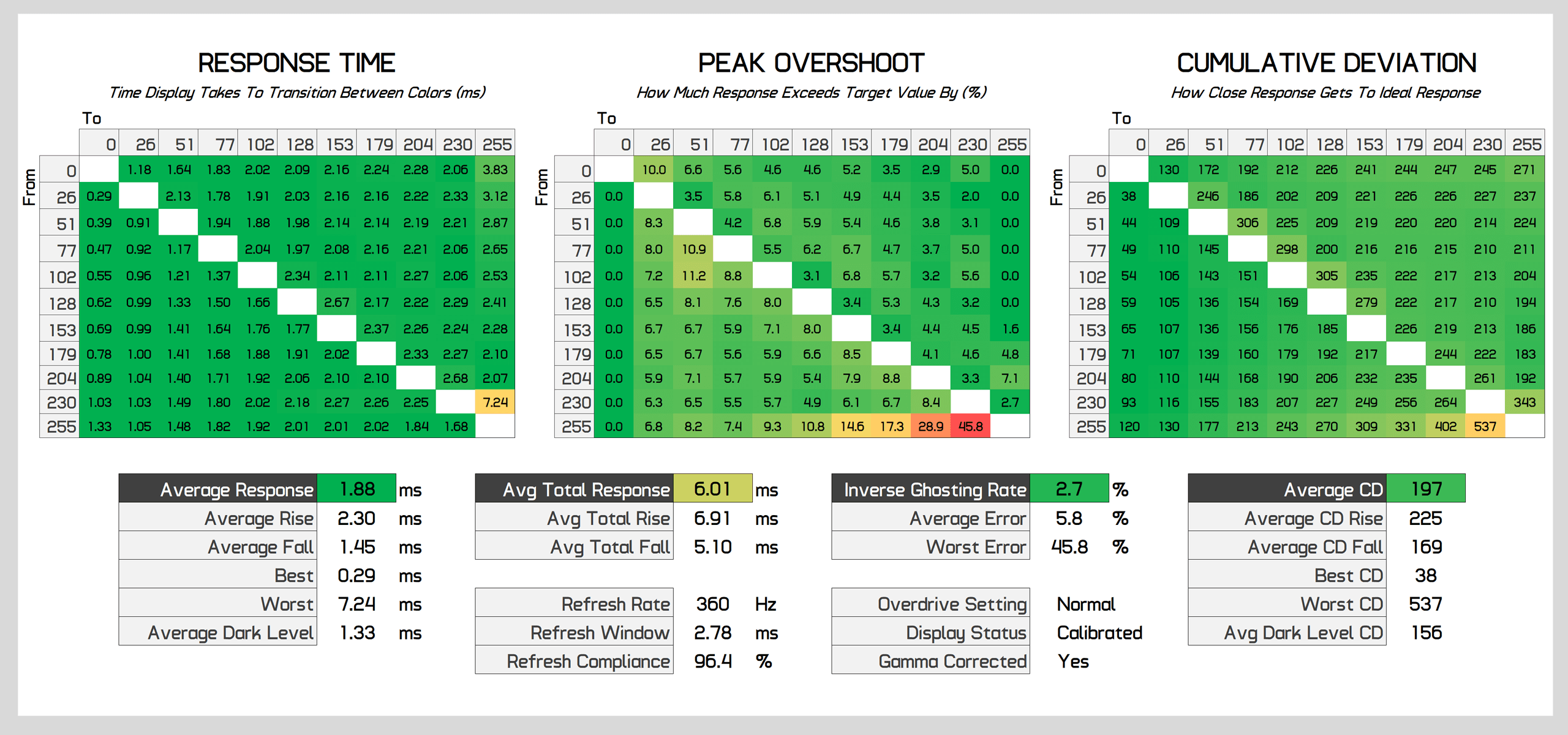
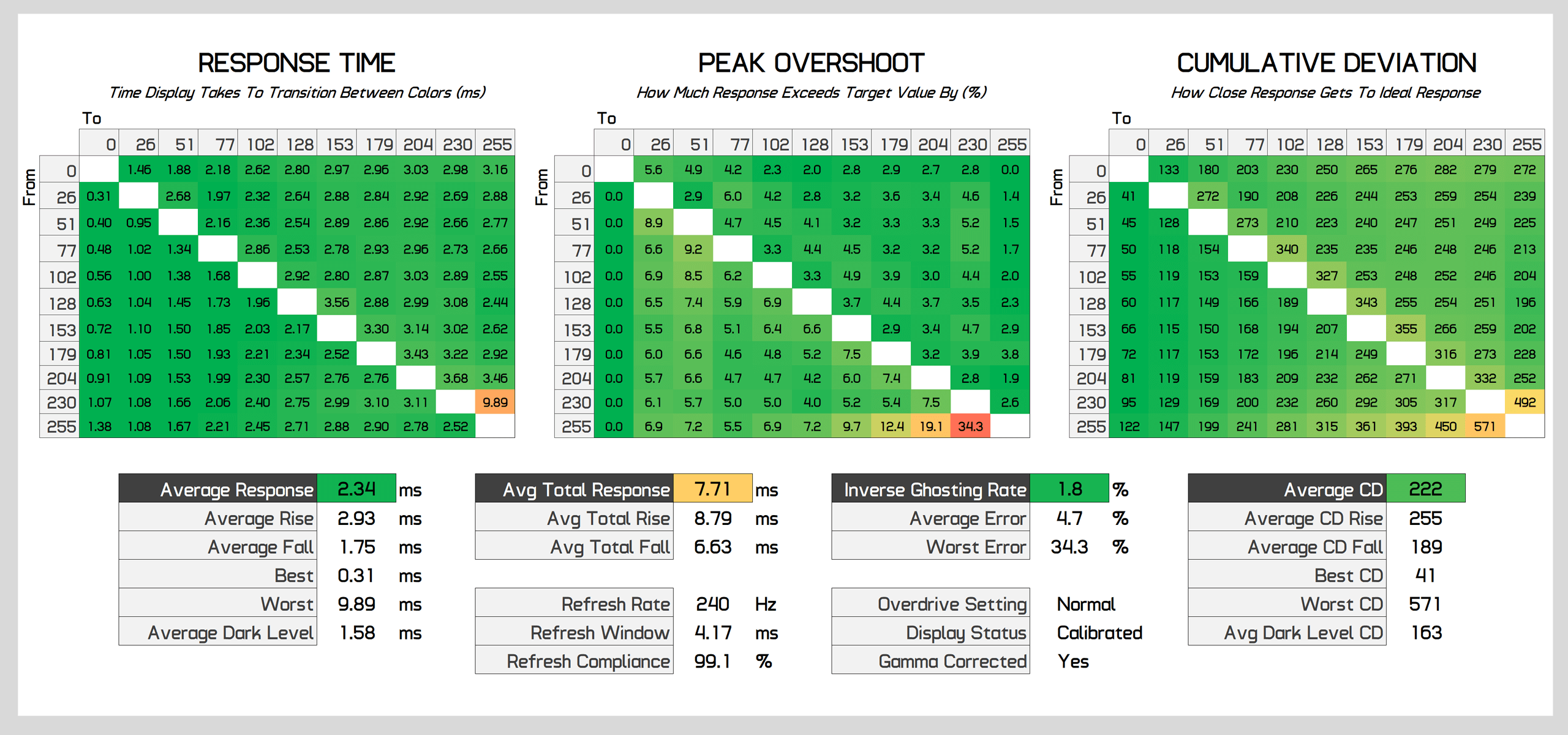
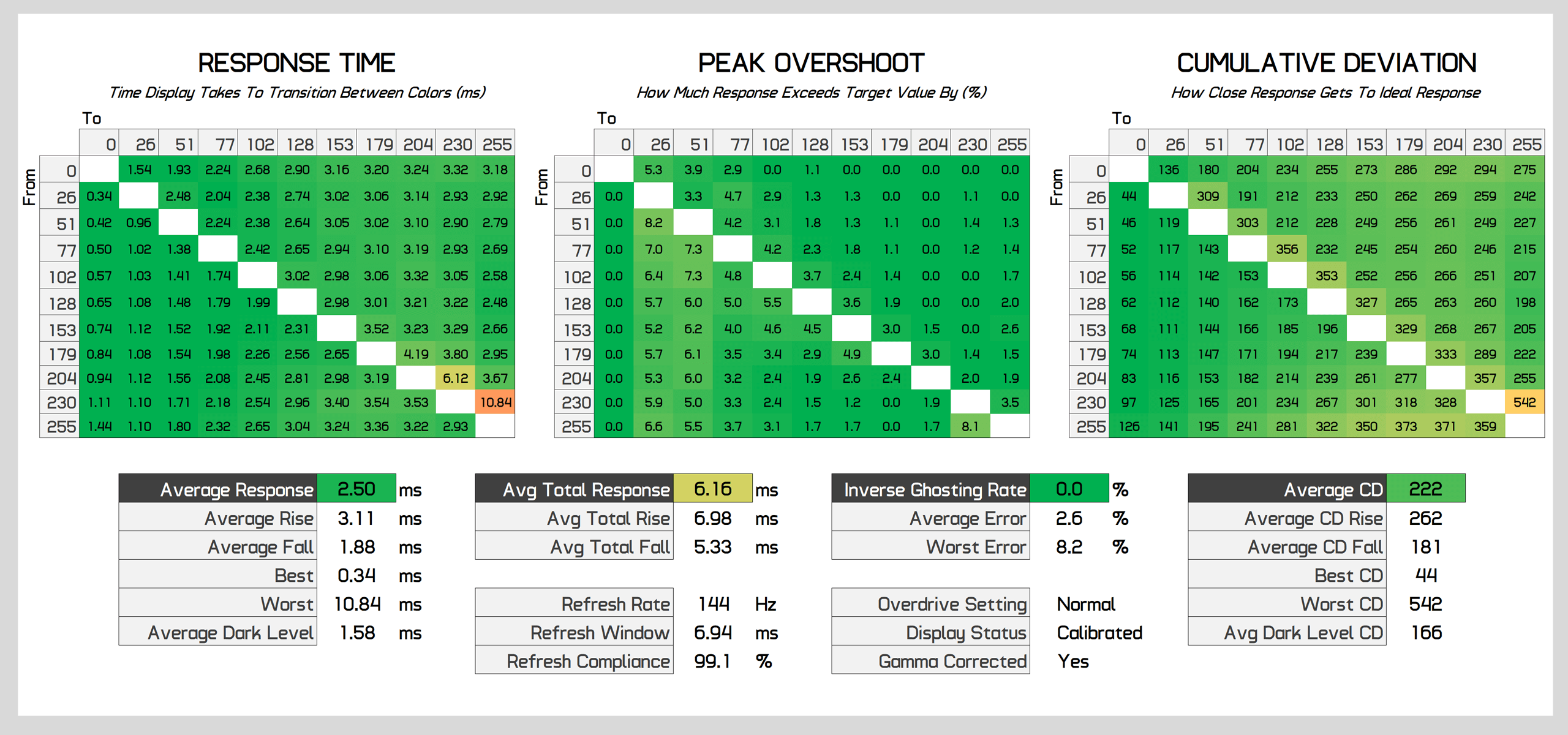
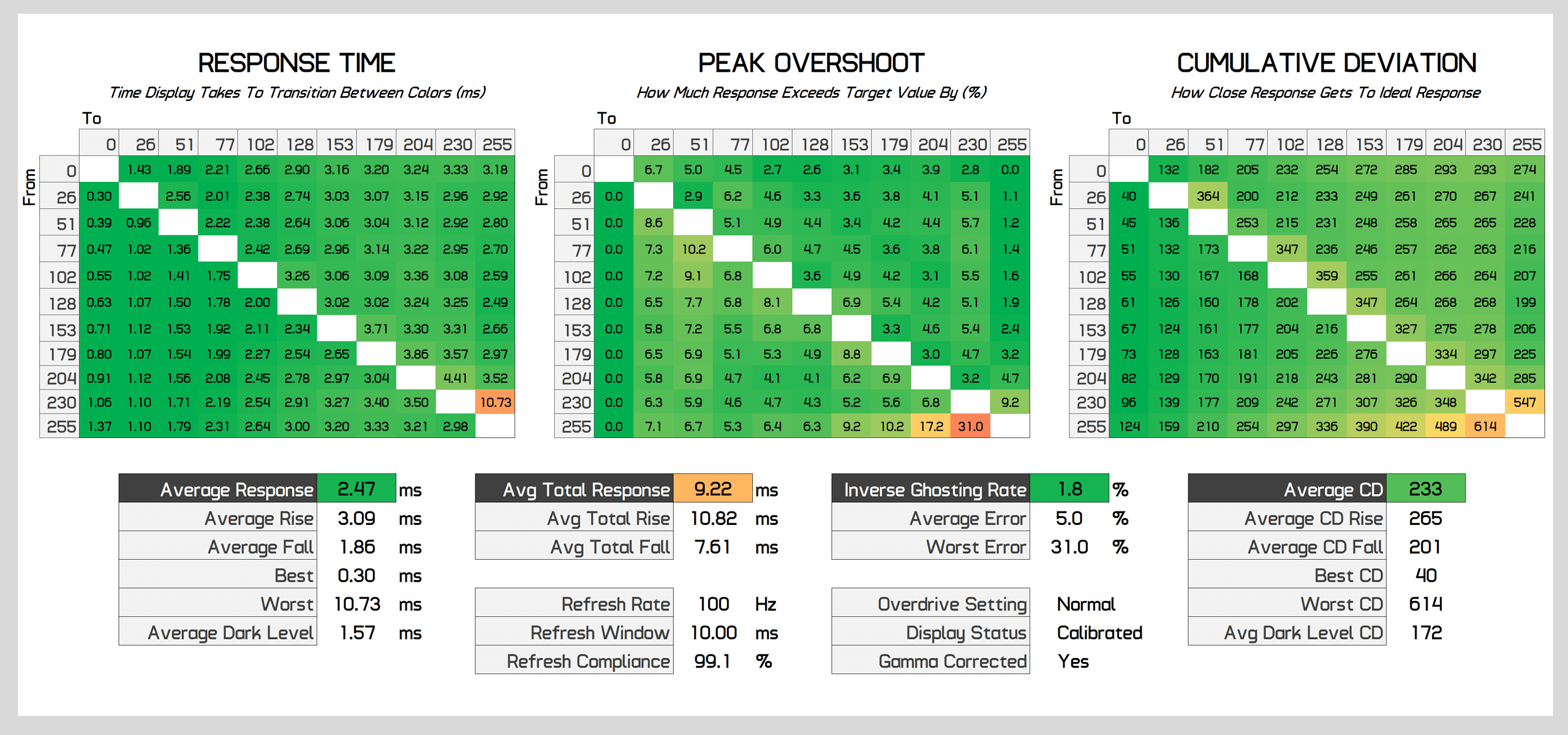
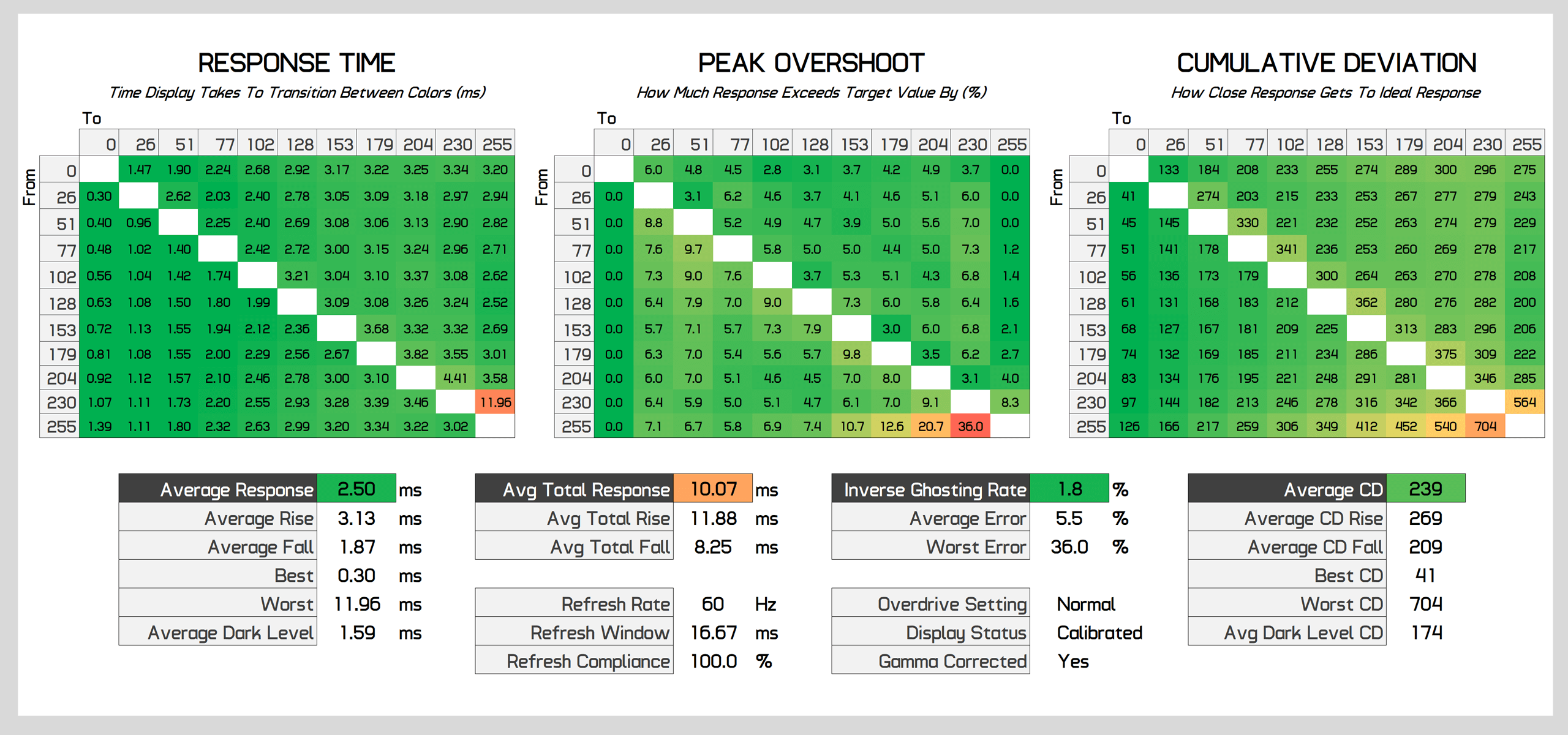
What’s fantastic to see is that the Normal mode, which I think is perfect for 540Hz video gaming, is likewise outstanding throughout the whole refresh rate variety thanks to variable overdrive. There’s truly no refresh rate where this display screen carries out improperly, at 360Hz it can be found in at 1.9 ms, at 240Hz 2.3 ms, at 144Hz 2.5 ms and 60Hz 2.5 ms too with essentially no overshoot at any point. Overdrive isn’t rather as aggressive at these lower refresh rates which is why we go from 1.8 ms to 2.5 ms at the lower parts of the variety, however in any case this is exceptional efficiency that offers us an elite-tier single overdrive mode experience.

Compared to other screens the PG248QP is the fastest LCD that I’ve checked to this point. It’s 0.5 ms much faster than the PG27AQN at its greatest refresh rate, and over 50% faster than the XL2566K at a lower level of overshoot, validating Asus declares about a roughly 50% more responsive experience than conventional TN panels. And these are a few of the fastest screens walking around, relative to a more basic 240Hz IPS to even some older TN screens, the PG248QP is over two times as quick in both revitalize rate and action time. General OLEDs are still much faster, holding about a 6x benefit, though no OLED is readily available at 540Hz.

Typical efficiency is likewise excellent from this Asus display, once again validating its position as the fastest LCD I’ve evaluated. It’s 33% quicker usually than the PG27AQN and accomplishes this at a lower level of overshoot which is exceptionally outstanding and reveals that TN still has a location in the marketplace for severe speed. It’s likewise a clear action ahead of the BenQ XL2566K, which is anticipated from a more recent generation of panel however possibly not to this degree, and basically anything that’s not 360Hz or above has no hope of completing beyond OLEDs.

Typical cumulative variance likewise reveals the strength of the PG248QP and its strong mix of speed and absence of overshoot. We’re still seeing a 31% space in between the PG248QP and PG27AQN, and a 50% benefit over the XL2566K. Even at the specific very same 360Hz revitalize rate comparing finest vs finest overdrive settings, the PG248QP produced a 39% much better cumulative discrepancy outcome than the XL2566K, and integrated with the PG248QP’s much better tuning at lower refresh rates, we see a rather substantial total win to the Asus design. We are still a reasonable method off from LCDs matching OLEDs, a common OLED panel has a 5x benefit in this metric over the fastest LCD, so it’s still the case that an OLED at a lower refresh rate can match an LCD at a greater refresh rate in movement clearness. They can’t close the space in between 240Hz and 540Hz though regardless of their speed.


I do not believe 120Hz video gaming is the target audience for this screen however the PG248QP carries out well there regardless. This is likewise a terrific display for 60Hz video gaming if you occur to require this level of speed at a low refresh rate.
Among the huge selling indicate the PG248QP in addition to the 540Hz revitalize rate is assistance for backlight strobing through Nvidia ULMB 2. The combination into this screen is a bit more suitable than with the PG27AQN as it does deal with both AMD and Nvidia GPUs: on Nvidia GPUs at several refresh rates, and on AMD GPUs at 540Hz. This is since as I stated previously, making it possible for 540Hz on an AMD GPU stops adaptive sync from working, and ULMB 2 needs adaptive sync to be handicapped for it to operate at all. There’s a little quantity of excellent news there for AMD players that desire to combine this display screen with their GPU.
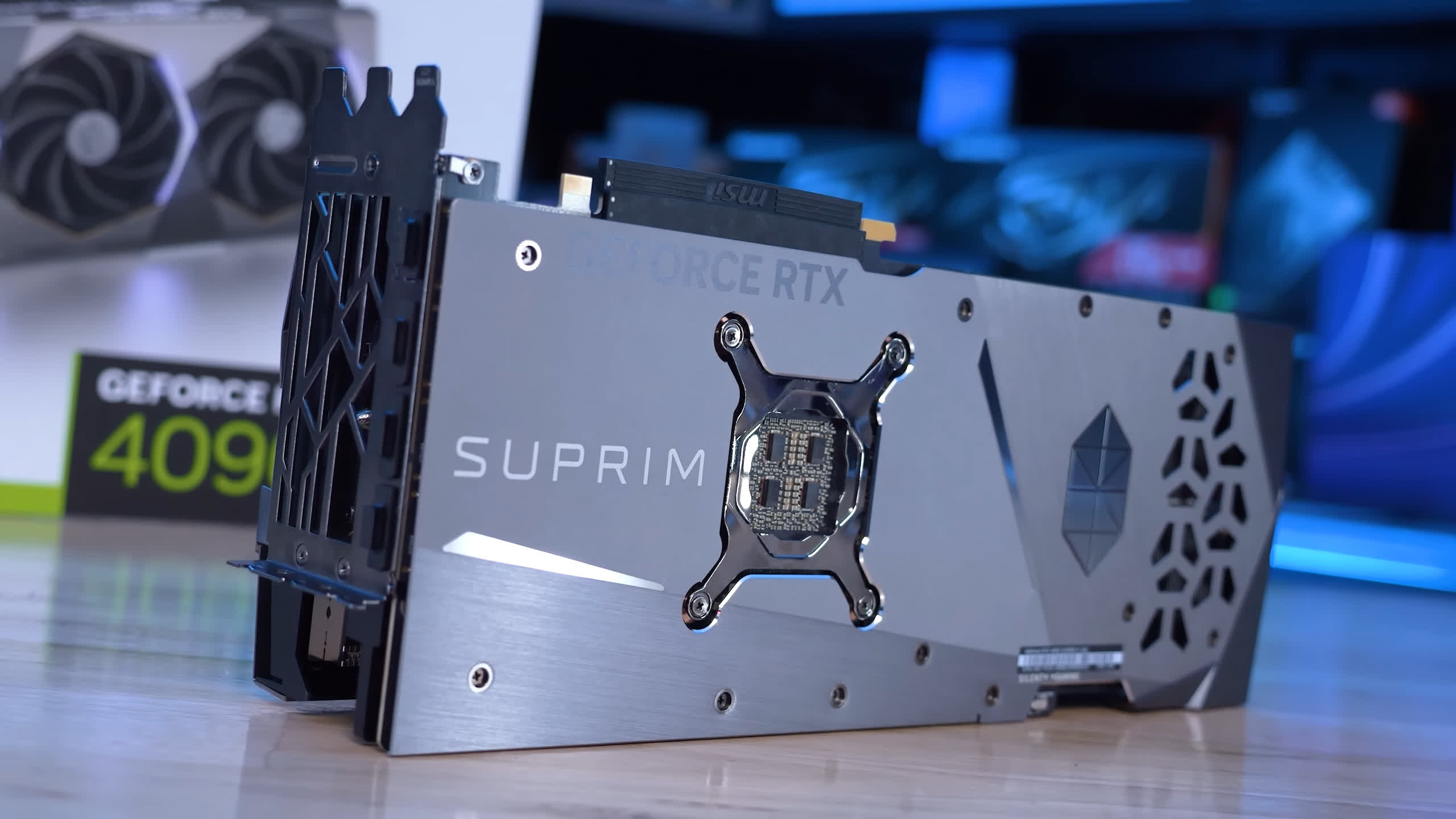
For Nvidia GPU owners there’s higher compatibility and assistance for numerous refresh rates, although you’ll still require to utilize ULMB 2 at repaired refresh rates, and there’s a remarkably minimal series of options. ULMB 2 just works down to 360Hz, at 240Hz and lower refresh rates the choice is greyed out, in contrast to the PG27AQN that supported it down to 144Hz. BenQ’s XL2566K with DyAc+ works down to 100Hz. If you desired to use the middle part of the refresh variety and backlight strobing all at once, state your video game does not run at 500 FPS on your GPU, then you ‘d be much better off with the XL2566K rather.
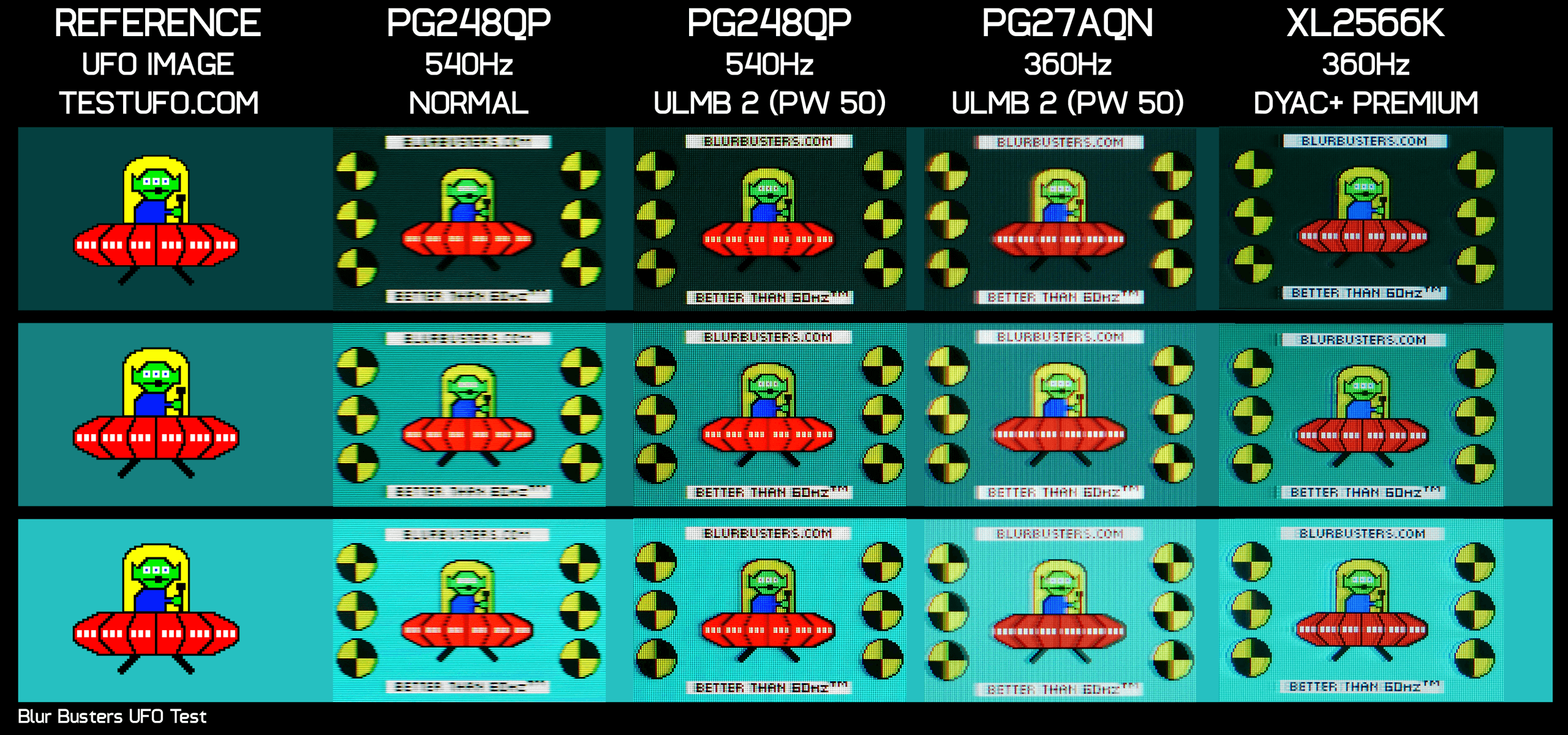
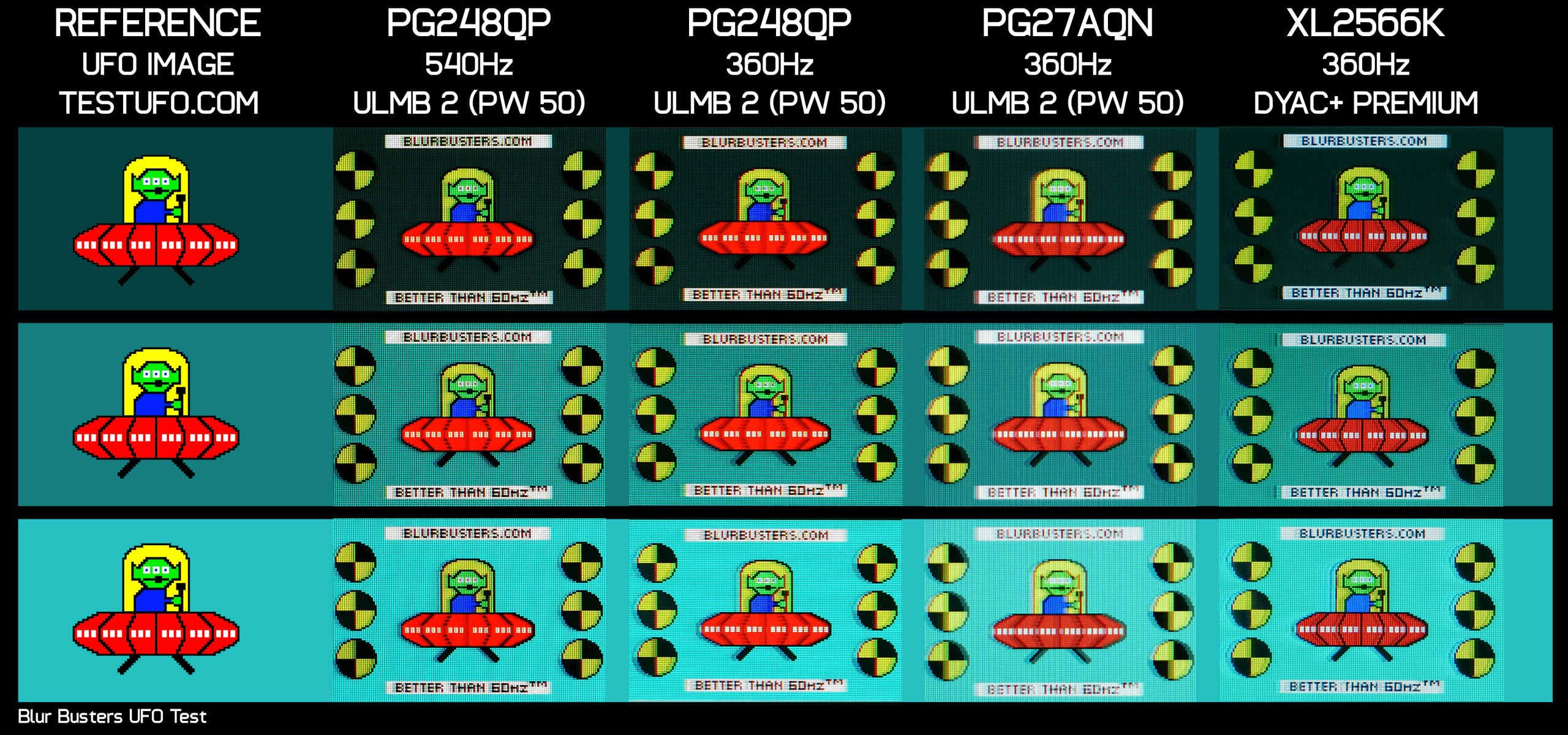
When you can allow it, the movement clearness supplied by the PG248QP and ULMB2 transcends to that of the BenQ XL2566K utilizing DyAc+ both at their optimum revitalize rate, 540Hz and 360Hz respectively. The PG248QP has somewhat less strobe crosstalk and a somewhat clearer image, although both are excellent. When turning the PG248QP down to 360Hz to get a matched refresh rate contrast, the space narrows in between the 2 designs however I ‘d still provide the total edge in clearness to the PG248QP, it actually does have exceptional movement clearness that would need to be the very best I’ve seen. Anything listed below this refresh rate the BenQ wins by default as it really supports strobing at those refreshes.
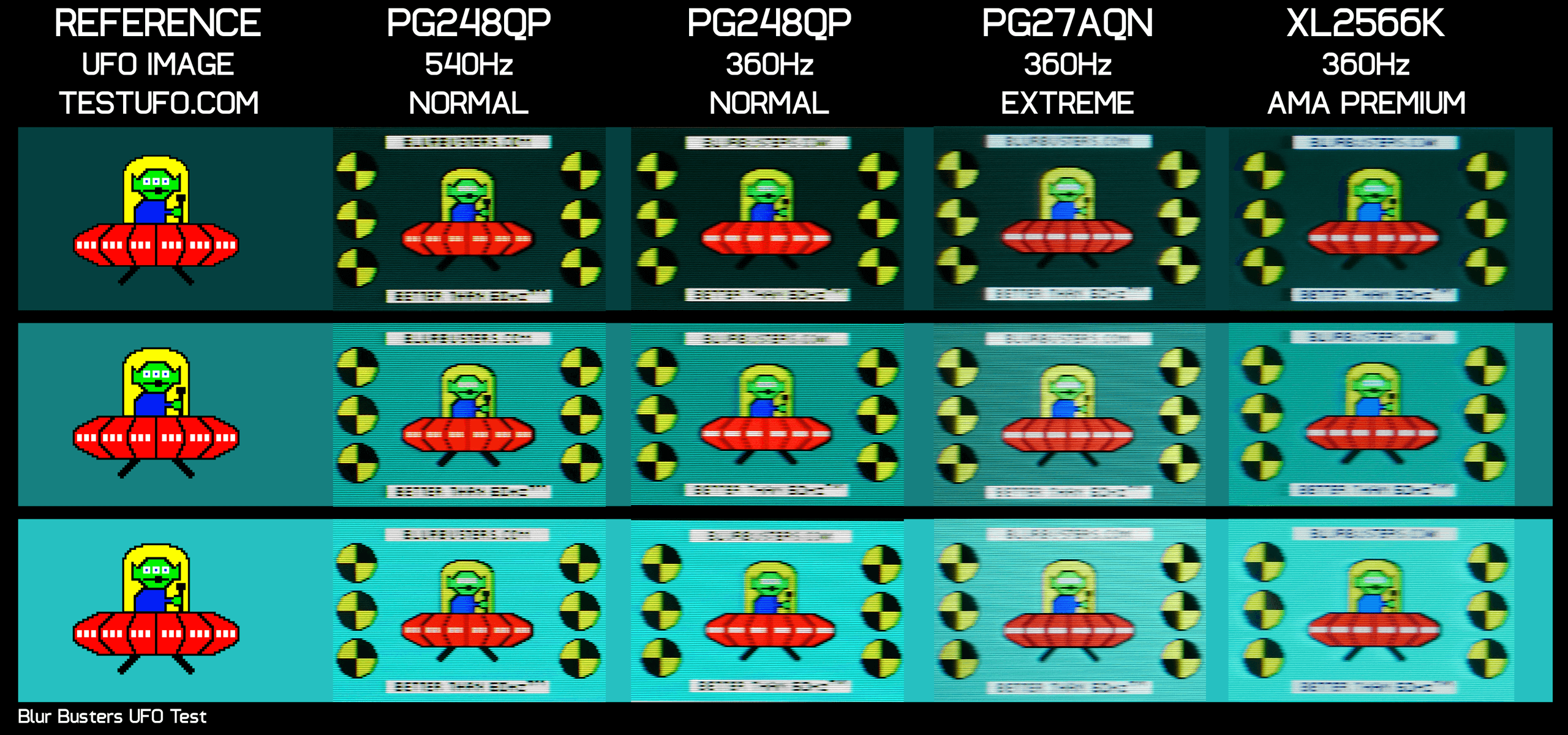
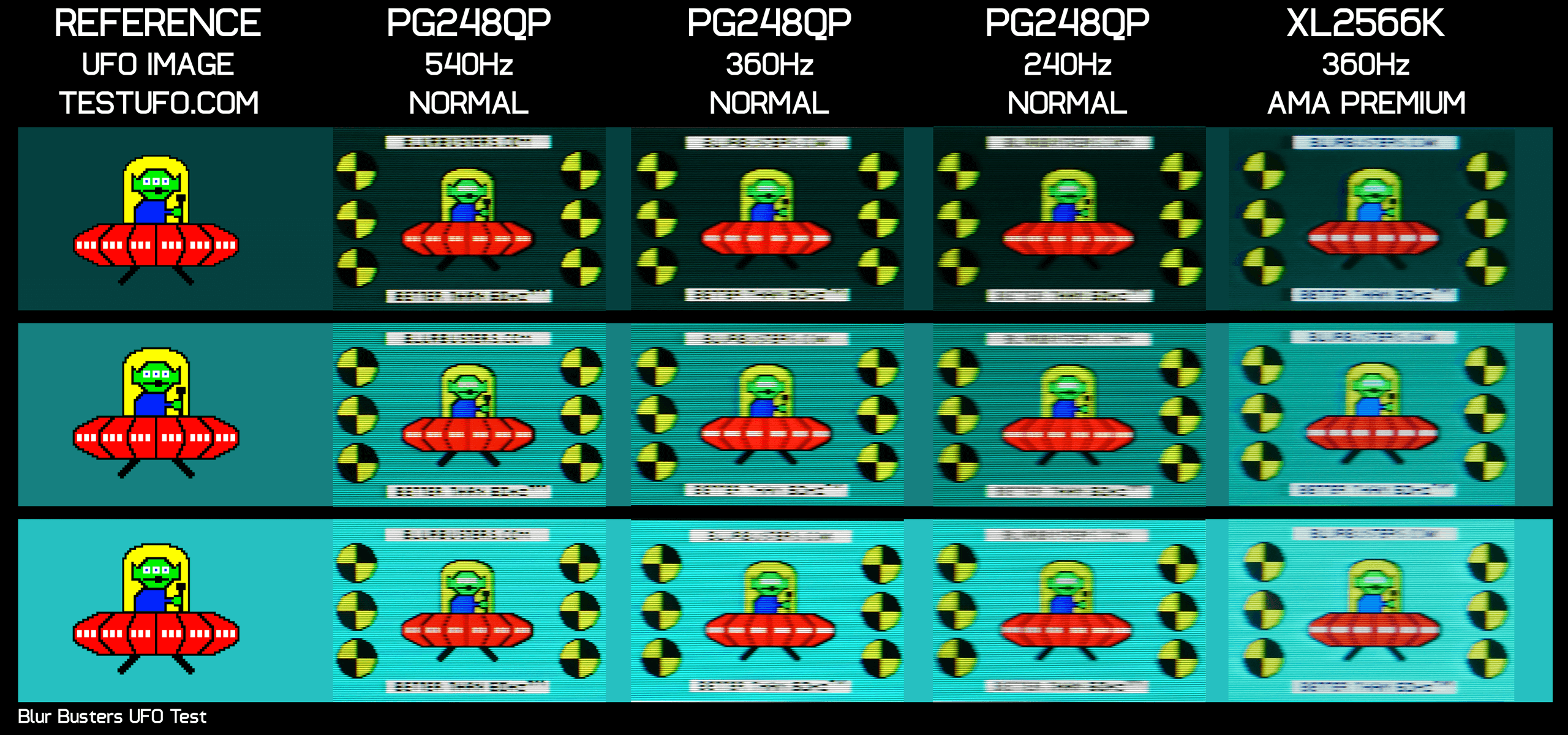
The advantage of the PG248QP extends beyond backlight strobing as the non-strobed 540Hz image is likewise extremely outstanding in terms of clearness. Comparing the 540Hz image here to 360Hz, whether from the XL2566K or the PG248QP declined to 360Hz, the 540Hz image is visibly sharper and less blurred; the text for instance while not clear is more understandable on the 540Hz image. Compared to 240Hz the distinction in blurriness is extremely apparent in favor of 540Hz.
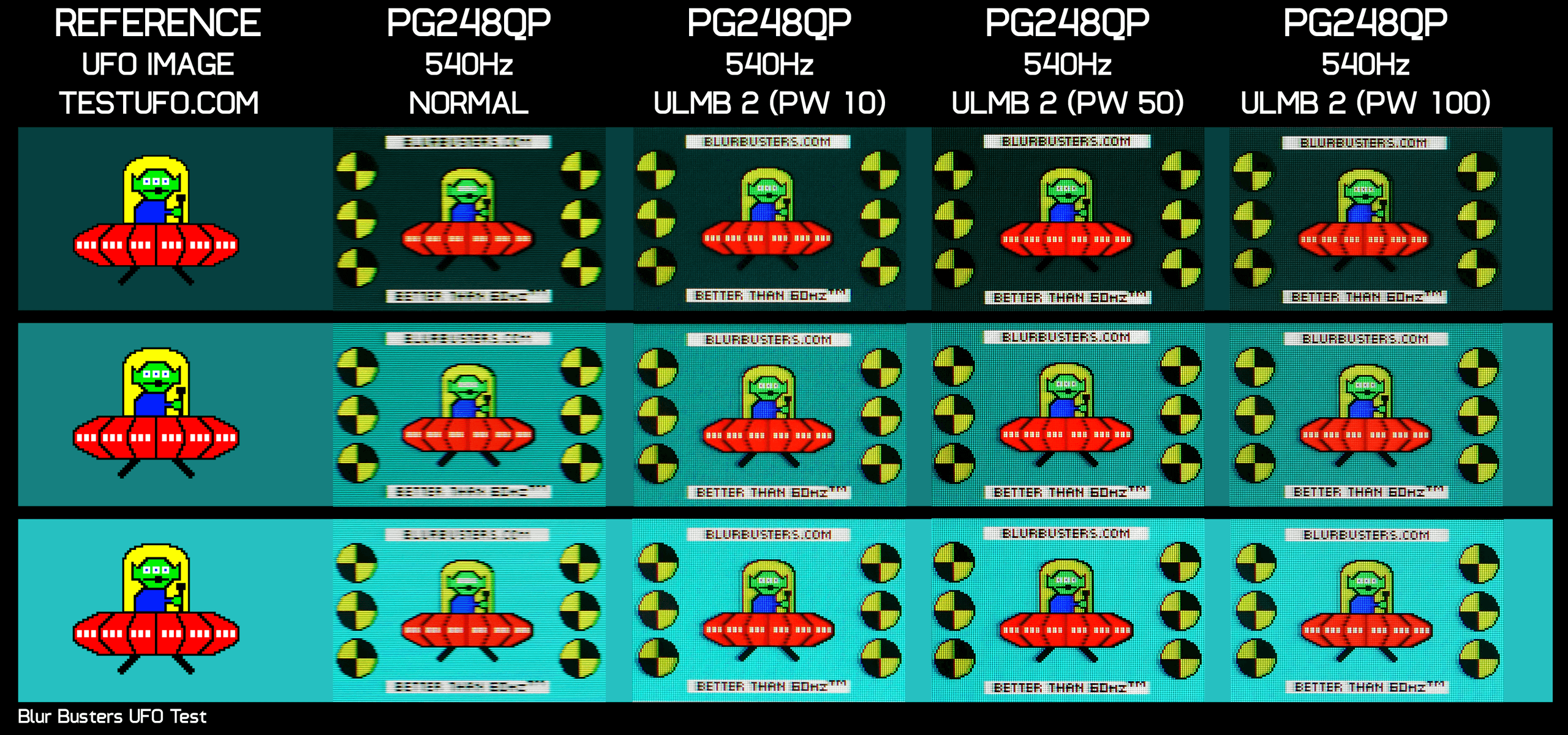
The ULMB2 execution likewise supports various strobe timing and lengths so you can change the position of finest clearness and the general clearness, although truthfully the distinction in between 100 and 10 for clearness is really tough to area. Utilizing the default strobe timing the middle area was clearest and the bottom was somewhat blurrier, although the variety to which you get excellent clearness is usually outstanding.
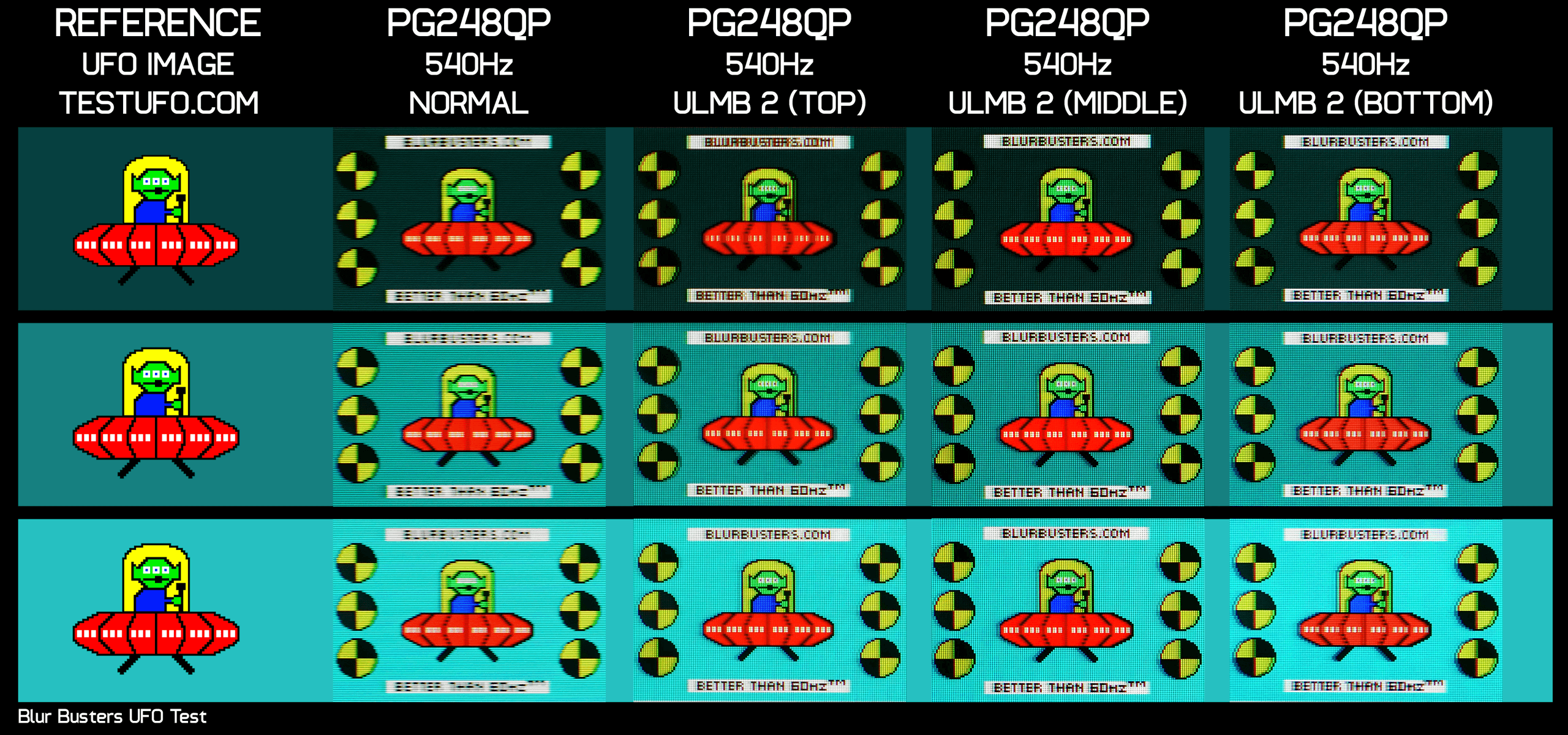
Now a non-strobed 540Hz image does look terrific however it can’t beat a strobed 360Hz image, so the very best image quality will constantly be discovered with 540Hz and strobing utilized at the exact same time. The greater refresh rate alternative is more versatile as you can pick to utilize strobing at a repaired refresh, or get the still outstanding clearness on deal at a variable refresh near 540Hz. Deciding to not utilize strobing might be the much better option if you can’t regularly struck 500 FPS, as strobing just actually works well when the refresh rate and frame rate are matched.

Input latency with the PG248QP is elite, providing simply listed below a 1ms processing hold-up in combination with a very high refresh rate and quick reaction times. This offers the PG248QP exceptional responsiveness together with a total low latency experience, matching the fastest OLEDs which get a benefit due to their elite action times. We’re speaking about less than 5ms of overall latency, which is exceptionally great.

Power intake is absolutely nothing fantastic at 36 watts, which is primarily attributable to the G-Sync module which is not really effective. It utilizes around 12 watts more than the BenQ XL2566K, however less than the PG27AQN as an example.
Color Performance
Color Space: Asus ROG Swift Pro PG248QP – D65-P3
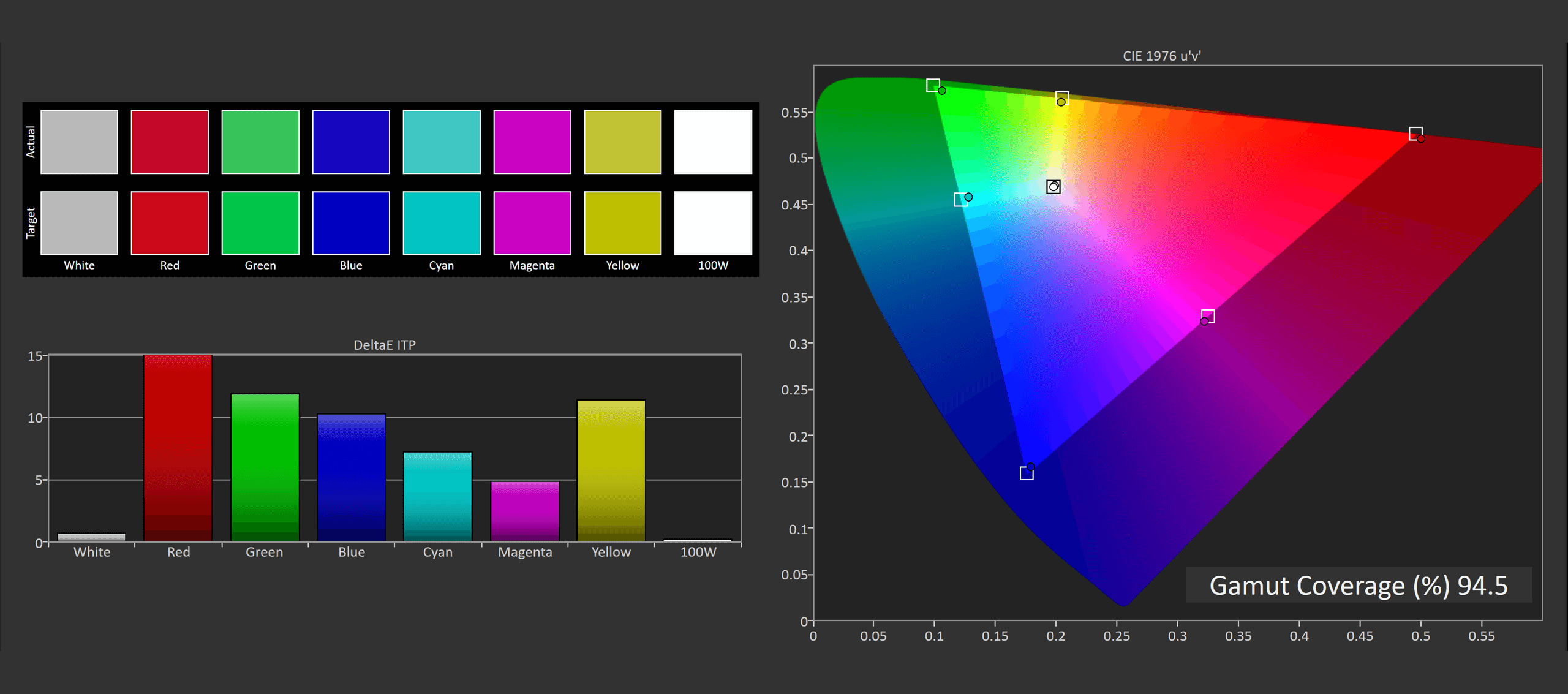
For color quality you may be amazed to find this panel is large range, sporting 95% protection of DCI-P3 and a general 70% protection of Rec. 2020. This isn’t the largest range, it’s practically the minimum sort of protection required for a correct large range experience, however it does offer one where the XL2566K and a number of other 1080p displays do not.
Default Color Performance
Asus ROG Swift Pro PG248QP – D65-P3, evaluated at native resolution, greatest refresh rate
Picture CALMAN Ultimate, DeltaE Value Target: Below 2.0, CCT Target: 6500K
Grayscale, Saturation and ColorChecker
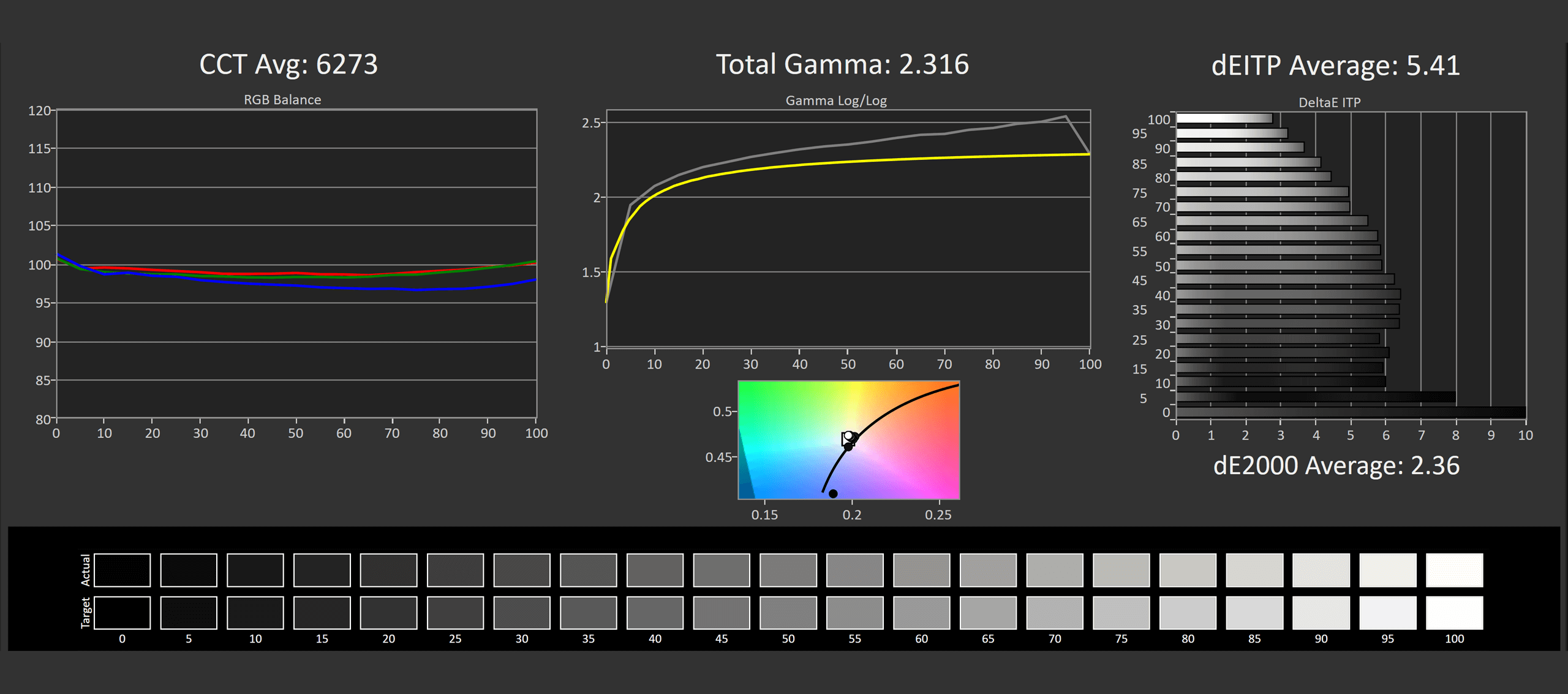
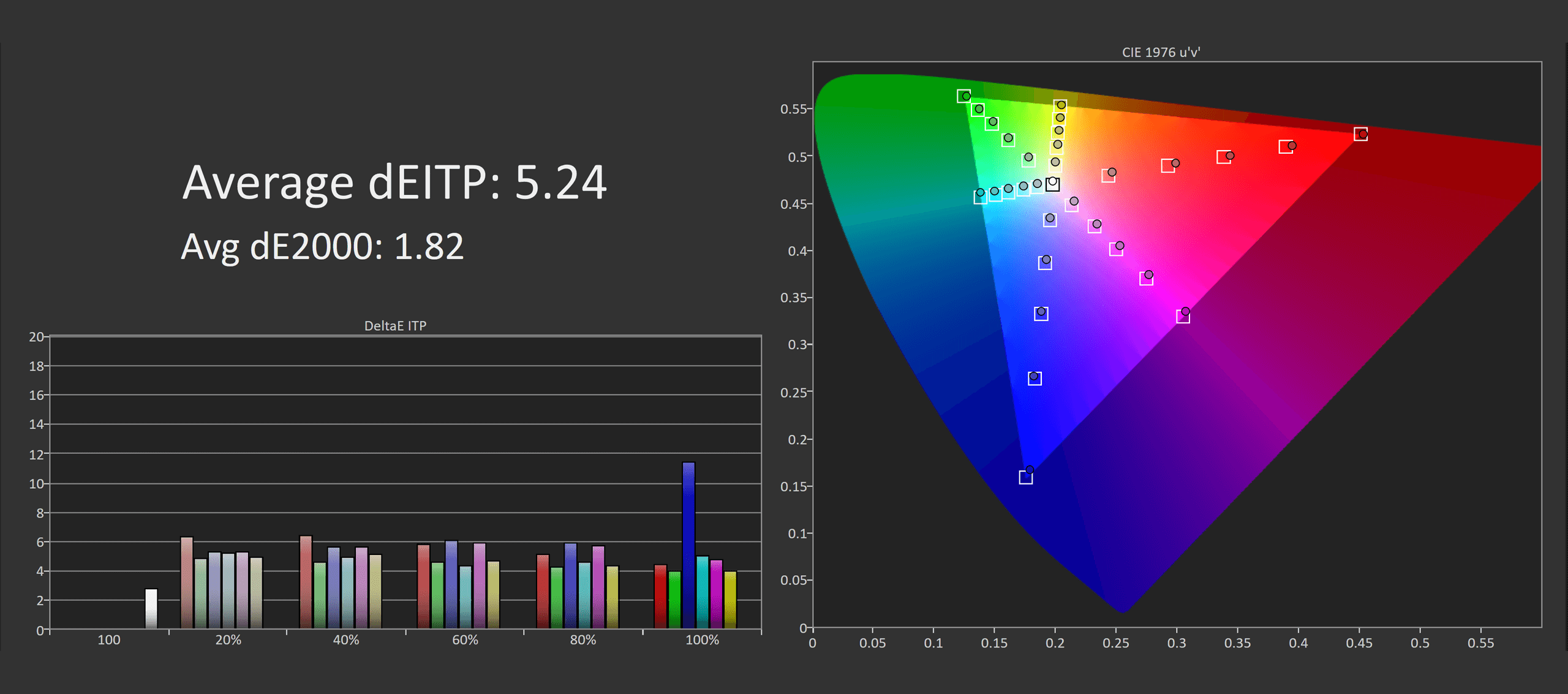
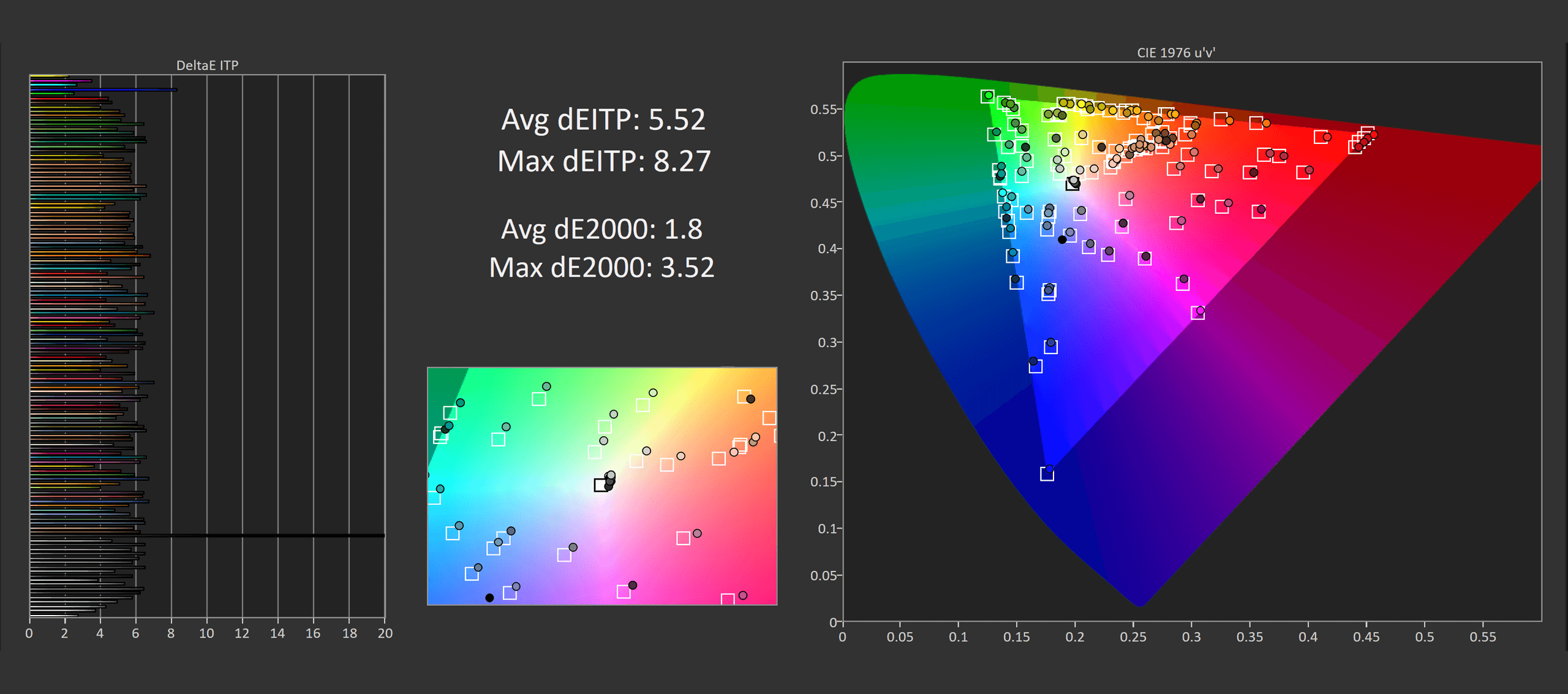
Factory color efficiency is good, greyscale deltaEs might be a little tighter however general quite sensible, while saturation and ColorChecker outcomes are exceptional as the display utilizes sRGB range emulation for SDR material by default. This avoids oversaturation from the factory, so normally the image quality is quite precise compared to most other video gaming displays.


And you’ll see that in these charts, the PG248QP is above average for grayscale from the factory, and among the very best screens for ColorChecker. In spite of using a TN panel and being mostly tailored towards esports players, Asus are still guaranteeing the visual experience is good from the factory.
OSD Tweaked Color Performance
Asus ROG Swift Pro PG248QP – sRGB, checked at native resolution, greatest refresh rate
Picture CALMAN Ultimate, DeltaE Value Target: Below 2.0, CCT Target: 6500K
Grayscale, Saturation and ColorChecker
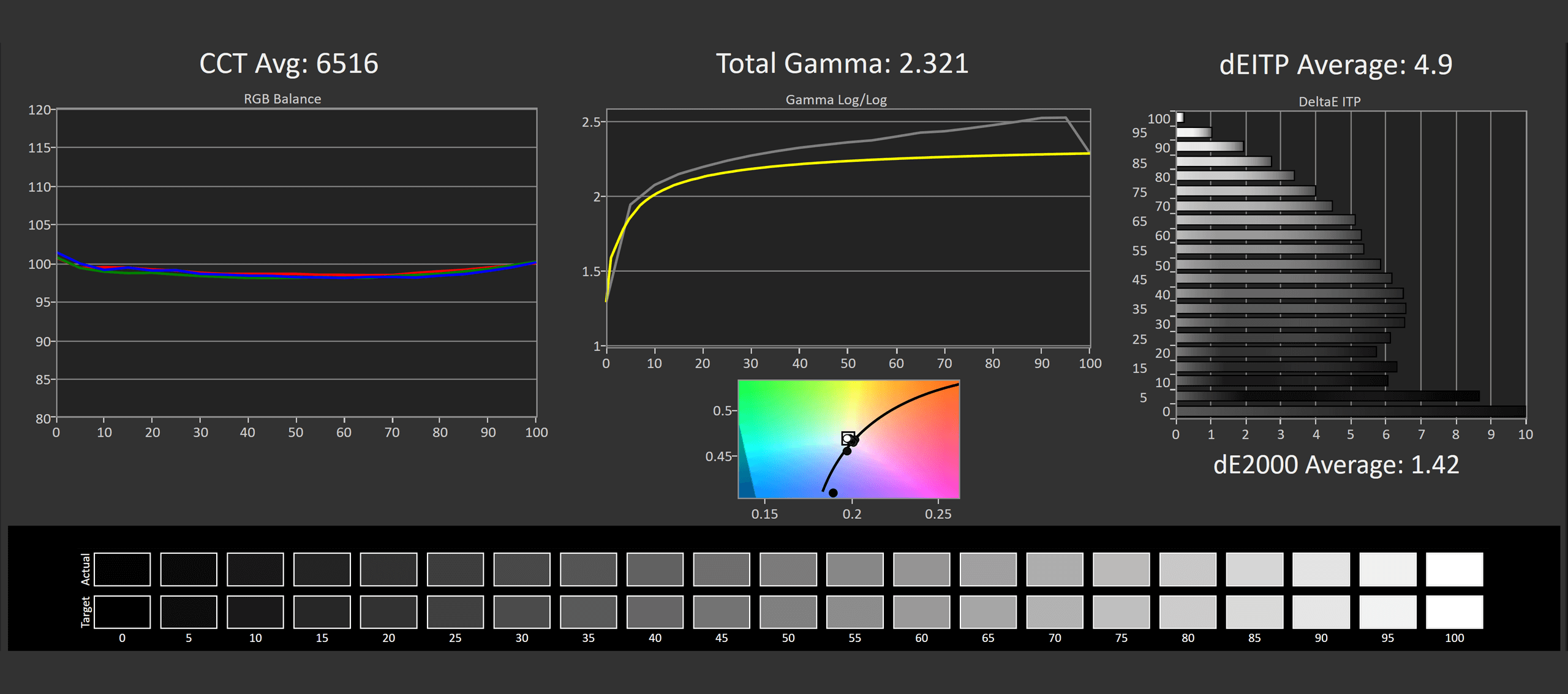
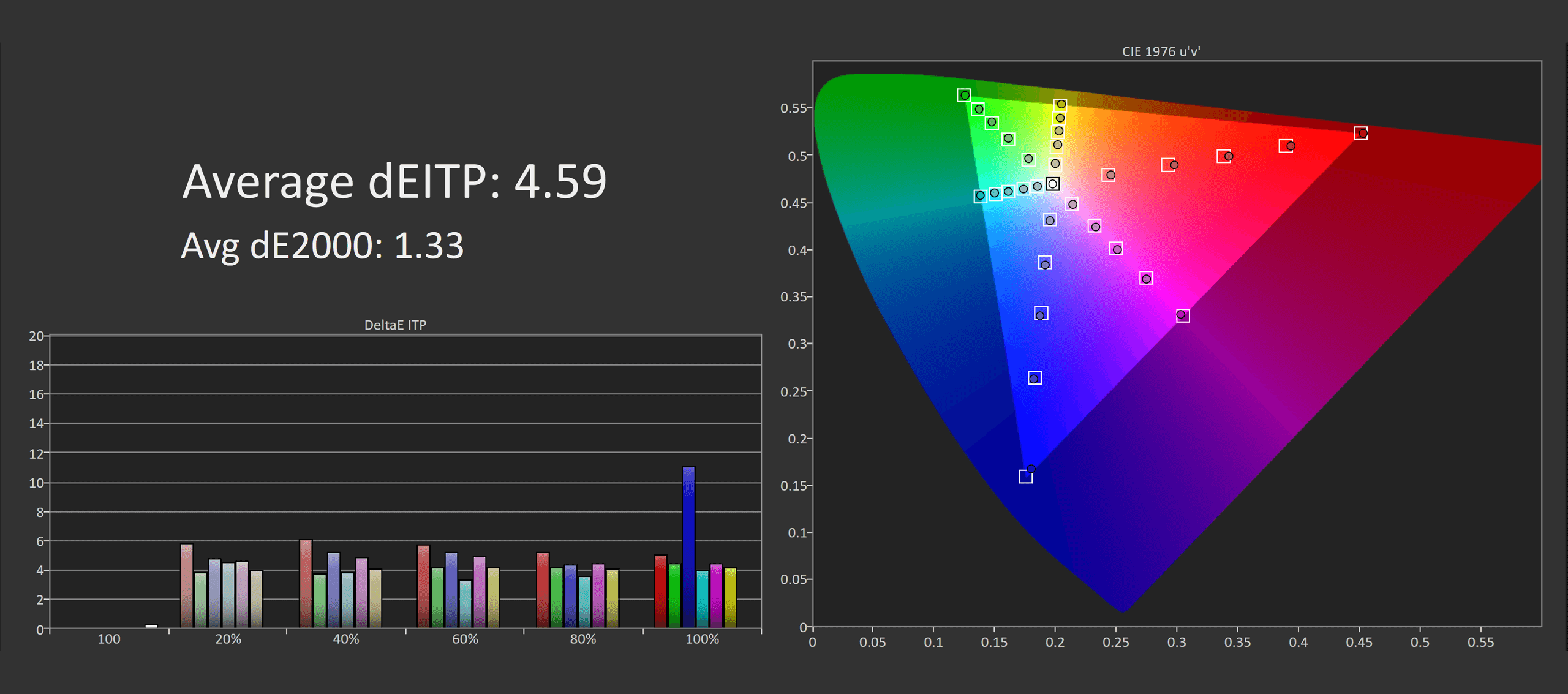
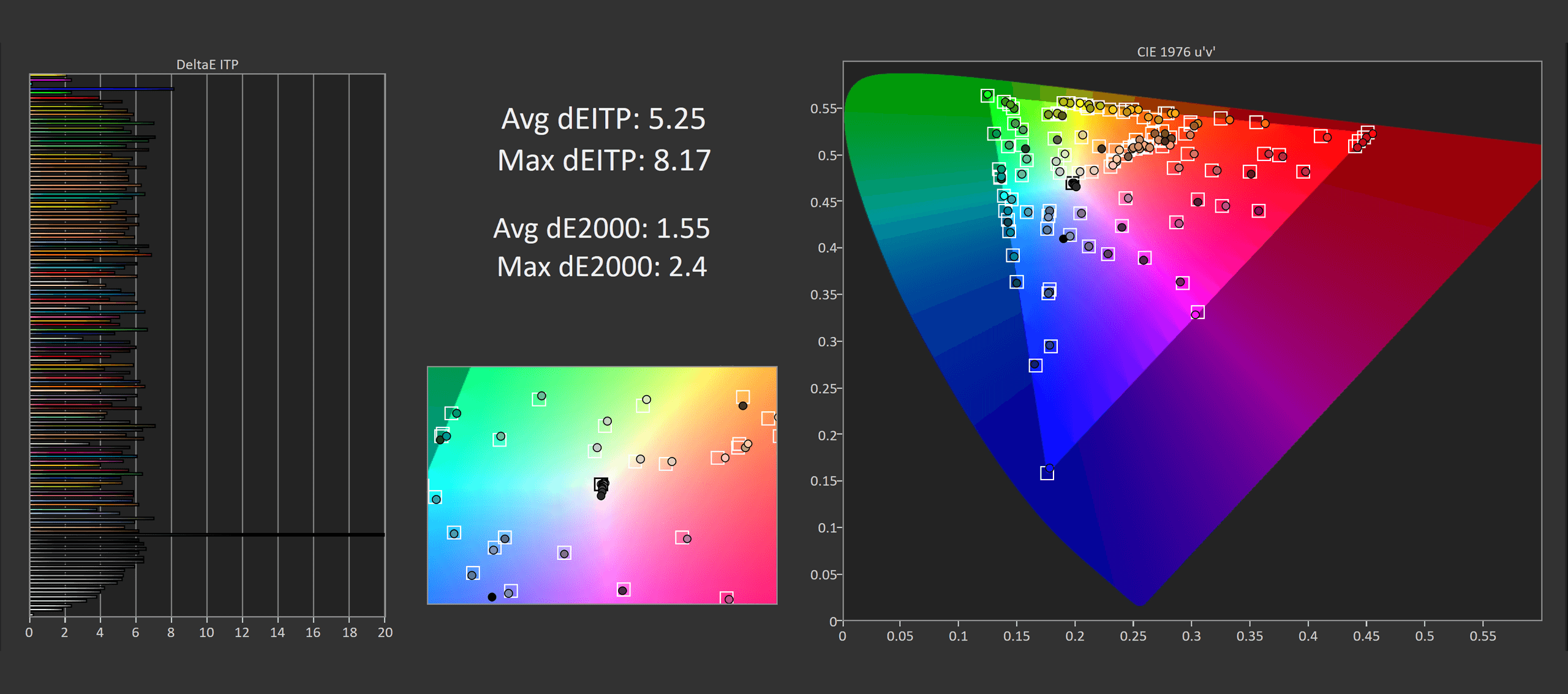
Adjusted Color Performance
Asus ROG Swift Pro PG248QP – sRGB, evaluated at native resolution, greatest refresh rate
Picture CALMAN Ultimate, DeltaE Value Target: Below 2.0, CCT Target: 6500K
Grayscale, Saturation and ColorChecker
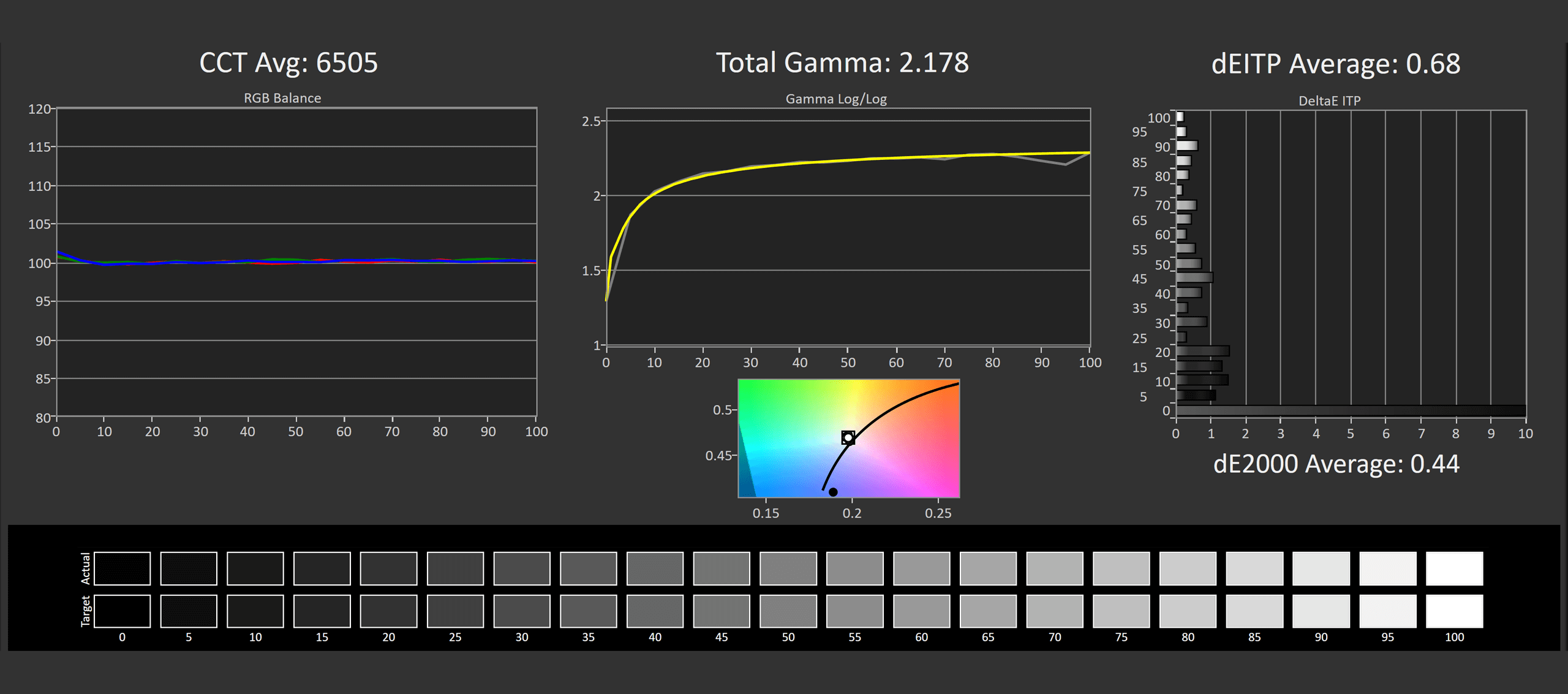
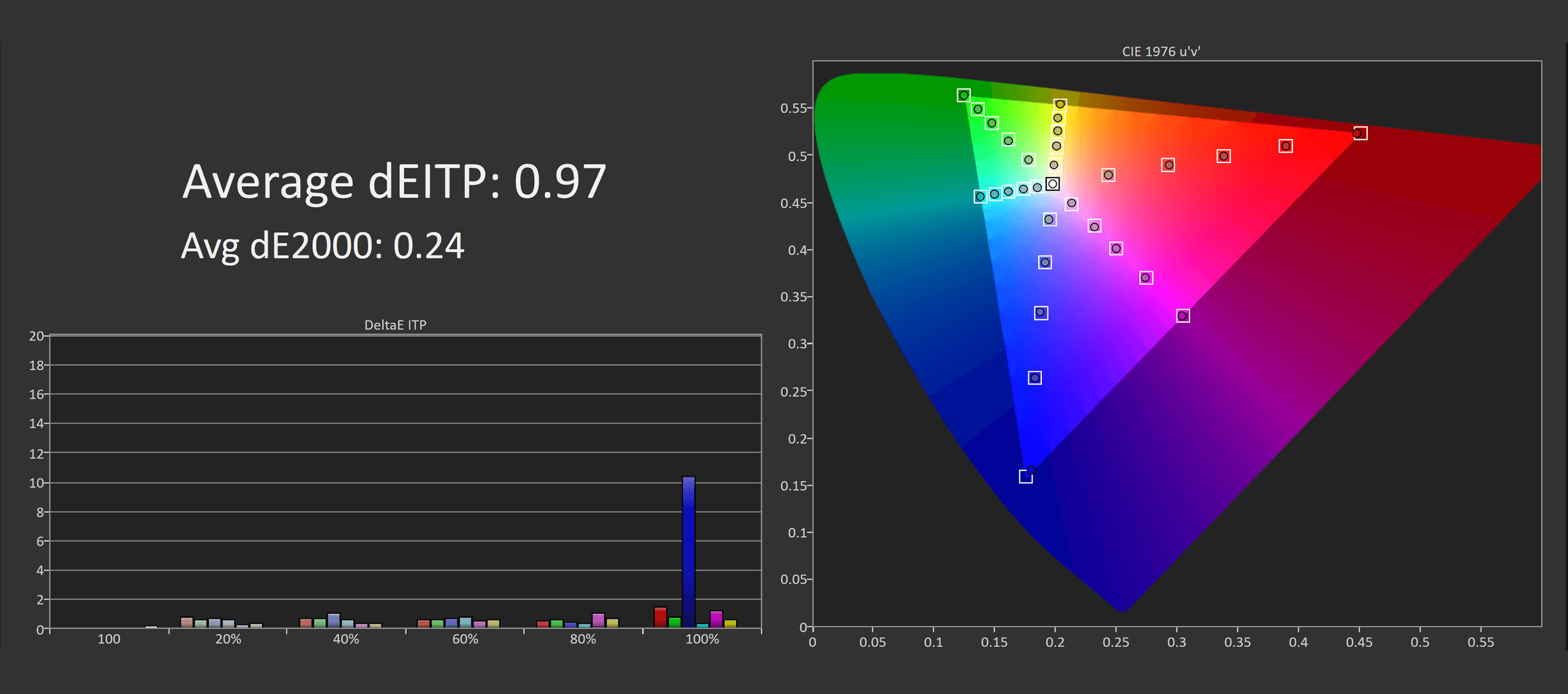

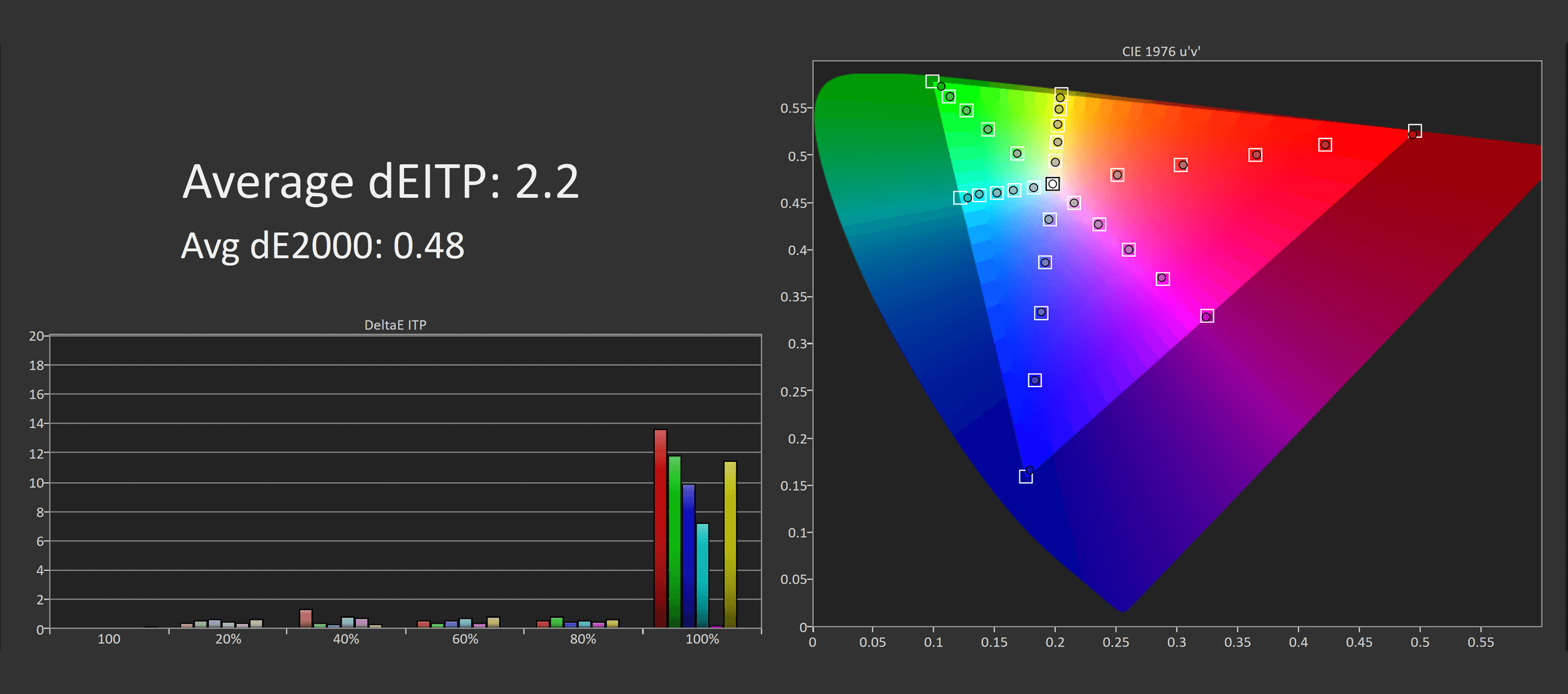
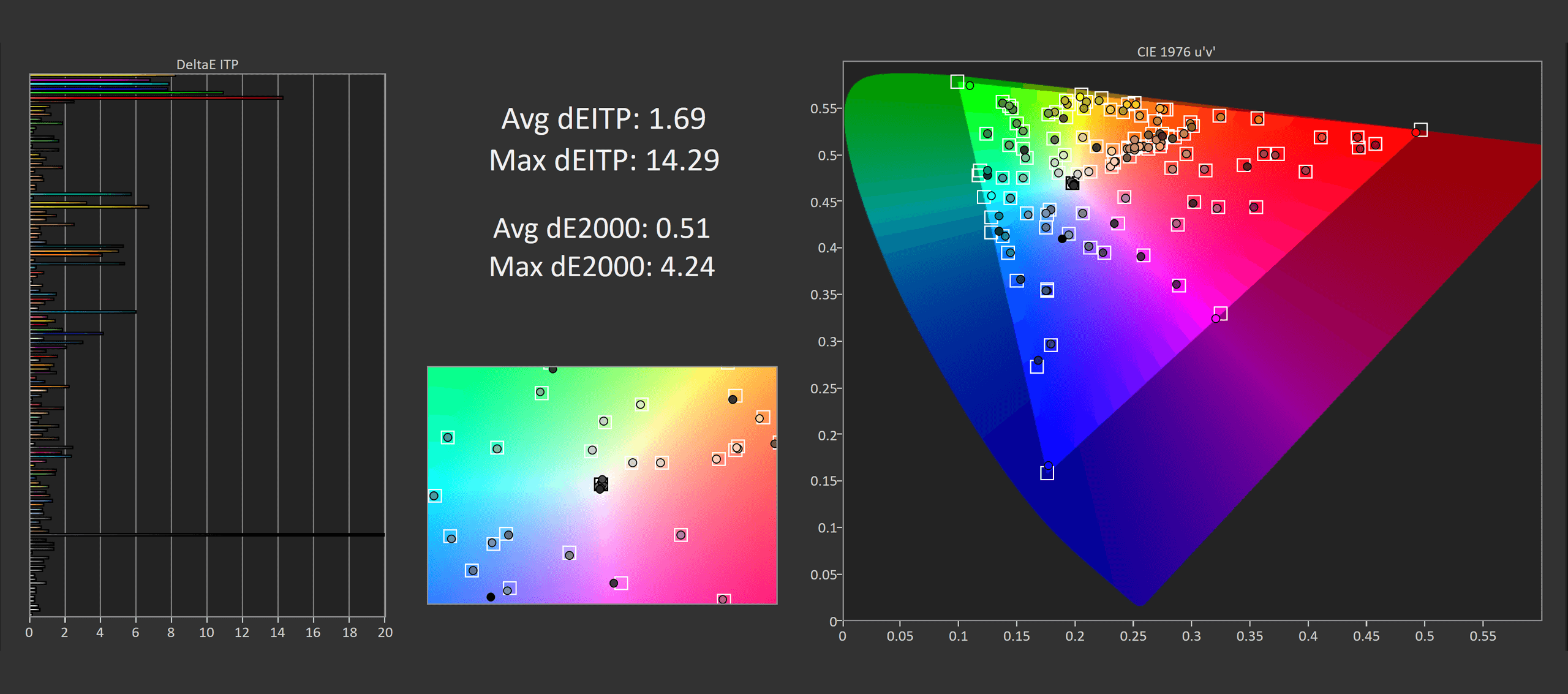
This display likewise provides complete control over white balance and other settings in the sRGB mode, and enables you to change in between sRGB and broad range utilizing the OSD settings. This enabled me to tighten up efficiency somewhat utilizing hardware controls. For the finest experience you’ll require to carry out a complete software application calibration, I utilized Calman for this and the outcomes were quite excellent as the panel has complete protection of sRGB and was fairly well adjusted from the factory. I would not suggest it for color precise large range work however even for the periodic little bit of broad range seeing it isn’t horrible.

Brightness is excellent at 420 nits after calibration which remains in the ballpark of the majority of other 1080p displays though significantly much better than the XL2566K. With backlight strobing allowed you’ll get simply over 300 nits with the longest pulse width, around 30 nits at the fastest pulse, and 150 nits with the middle 50 setting. The XL2566K does 330 nits strobed so in either case there suffices brightness here whether strobed or not strobed. Minimum brightness of 41 nits is quite great.

Contrast is remarkably great from this TN display, my system struck 1376:1, 26% greater than the XL2566K and an all round variety from a non-VA LCD panel. Black levels aren’t specifically dark and obviously to get this outcome you require to see the panel dead on, however you will not be getting a contrast downside even if it’s a TN display.
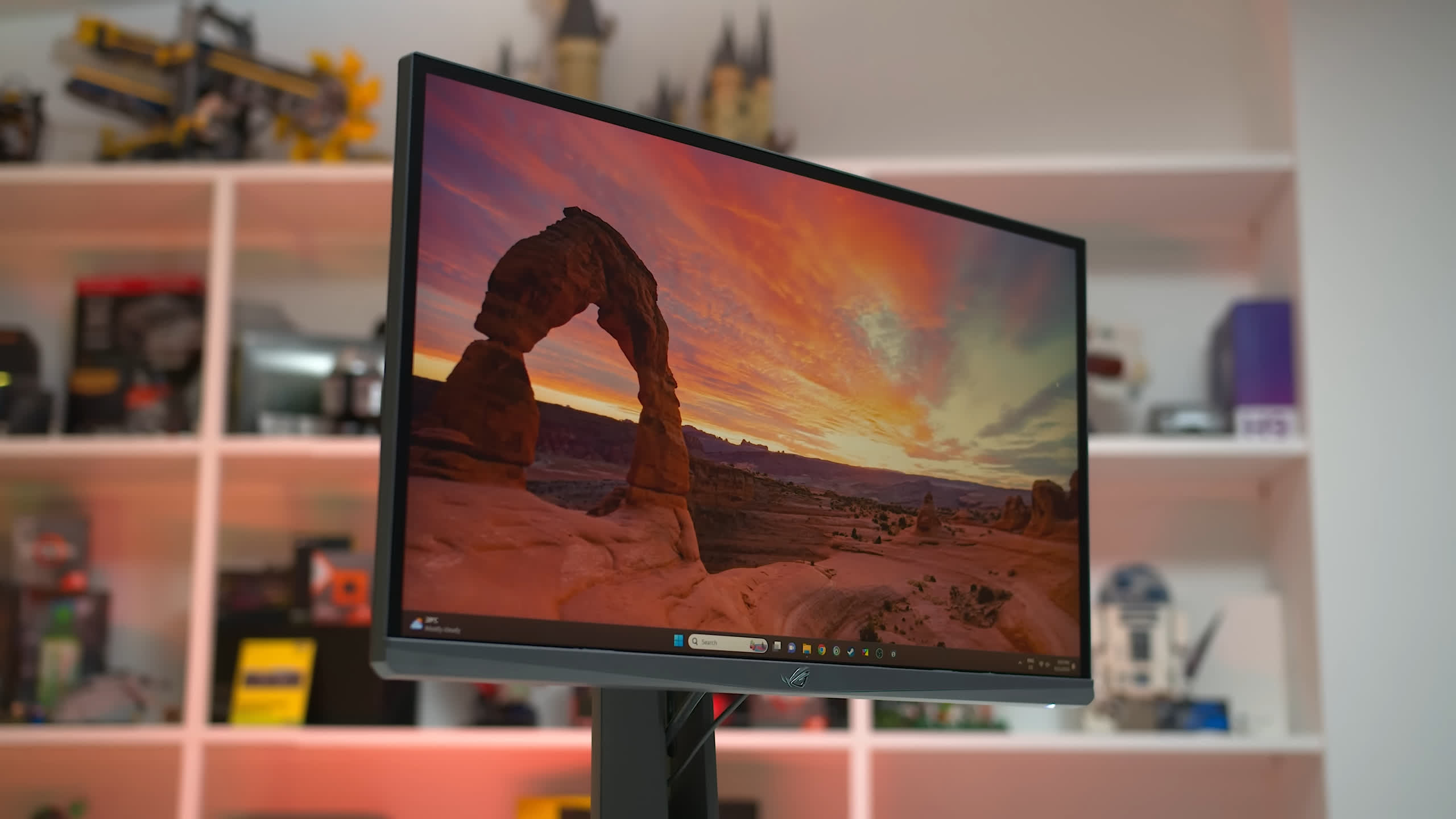


The greatest disadvantage to image quality from this panel are the seeing angles, which are dreadful. You actually need to see this display screen dead on to get an excellent experience, any minor off-axis watching angle in the horizontal or vertical instructions causes a considerable gamma and brightness shift, resulting in an actually rinsed image. Colors are likewise impacted at off angles. This is where a TN panel can look extremely bad beside an IPS or other kind of LCD, as you can see an IPS from a somewhat off-axis angle and still get a fantastic experience, whereas a TN looks relatively awful under the very same scenarios. Make sure your setup is enhanced where you are seeing the panel precisely in that extremely narrow seeing angle sweet area.
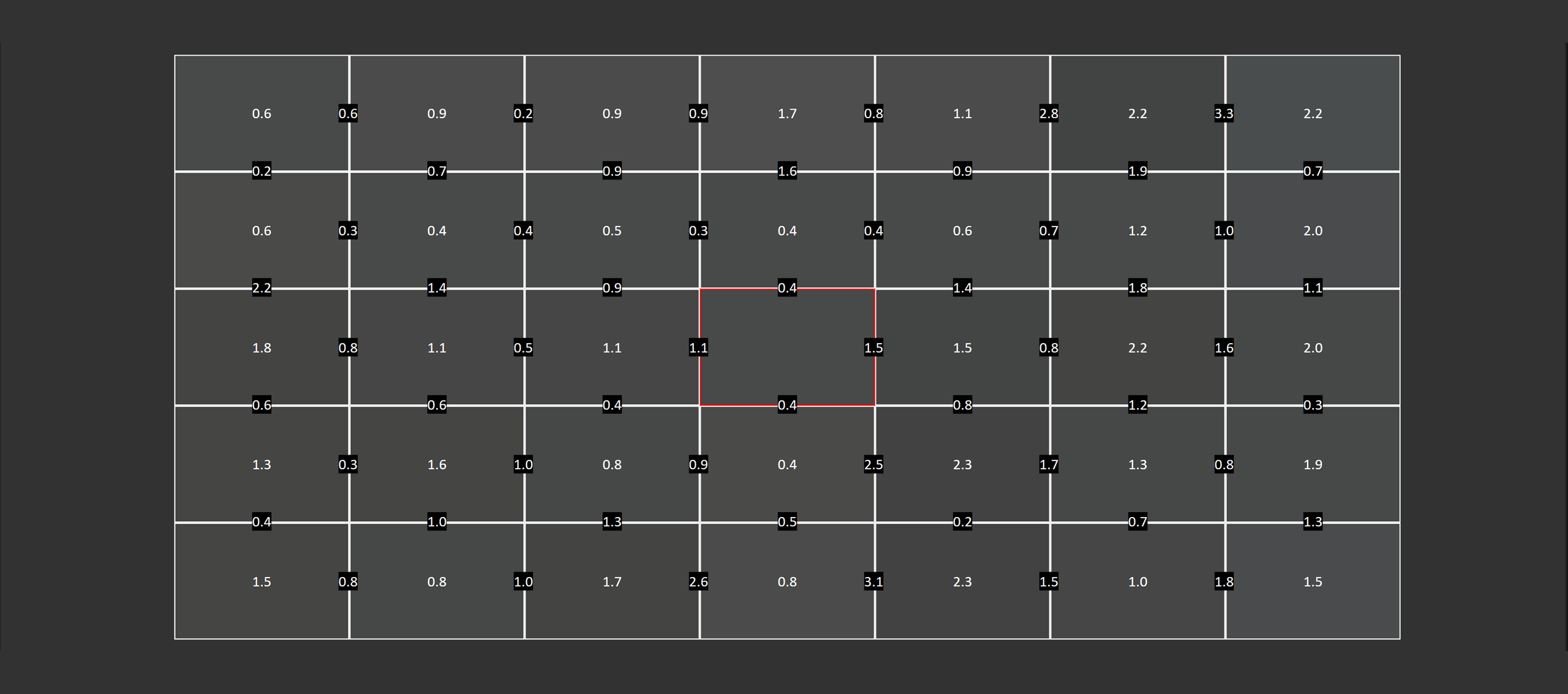
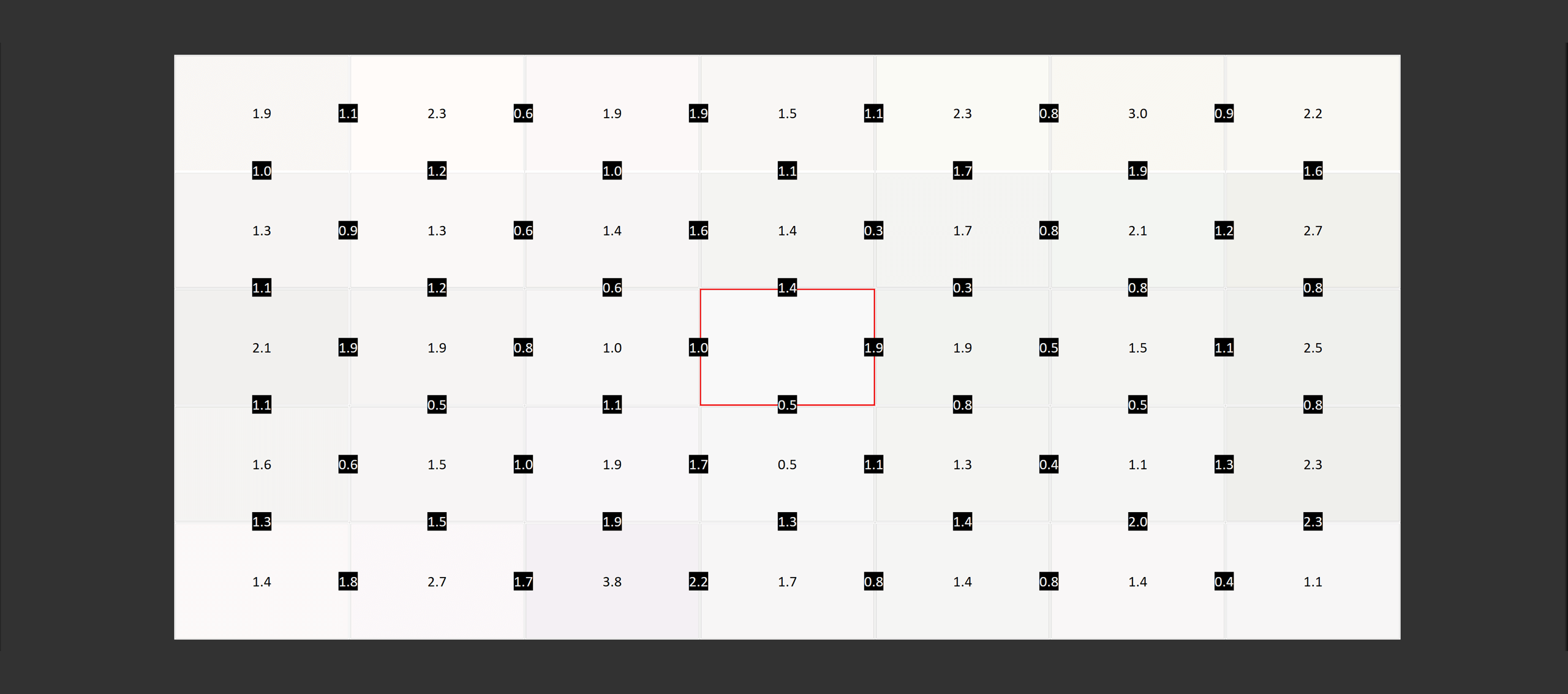
Beyond seeing angle problems harmony is affordable, definitely sufficient for video gaming and when seen efficiently you should not see excessive backlight bleed.
Center Essentials Checklist
Asus promotes this screen well, although consisting of HDMI 2.0 rather of HDMI 2.1 is bothersome. The color efficiency specifications are respectable, although marketing a 0.2 ms reaction time is a bit deceptive regardless of this being an extremely quick panel– typically the screen is more like 2ms. The absence of backlight strobing assistance listed below 360Hz likewise lets it down.


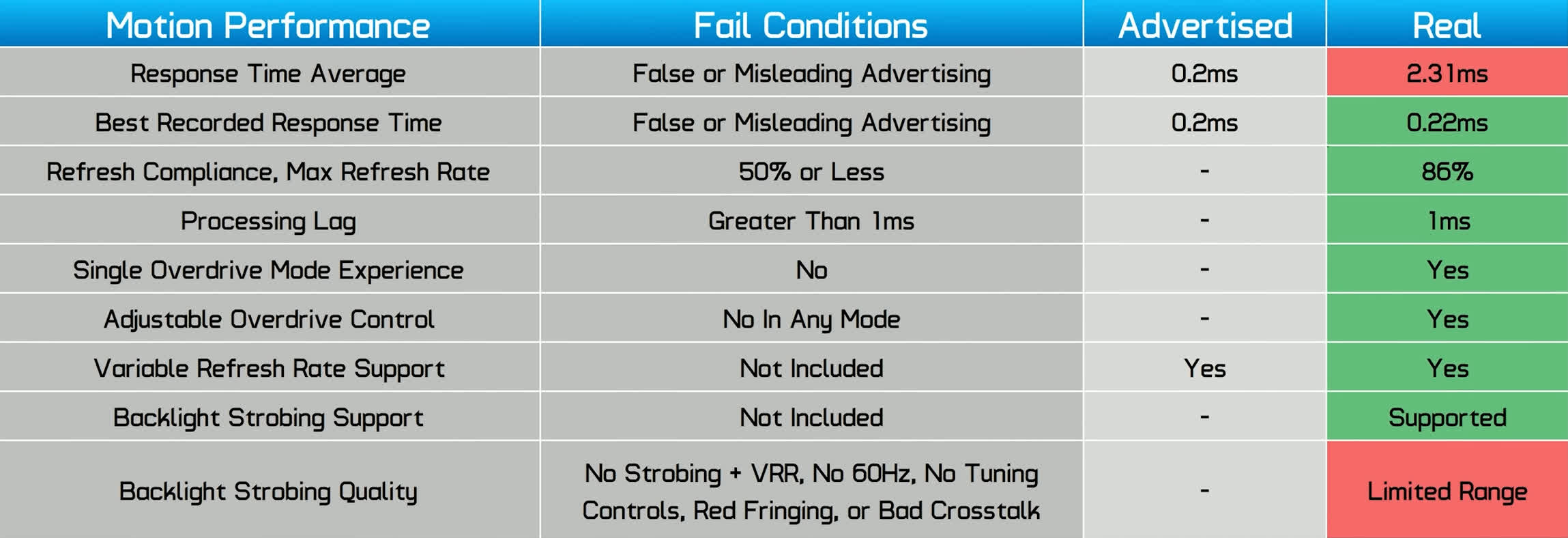

Asus likewise bizarrely promotes this as being HDR capable with DisplayHDR 400 assistance, although I do not believe any esports player purchasing this panel would really appreciate HDR at all.

The screen does not support real HDR, as it does not support any kind of regional dimming, resulting in an extremely low contrast ratio for HDR and weak brightness. I didn’t identify any concerns or problems with the panel, and in basic the panel quality is rather great.
540Hz Gaming is Awesome
In general, the Asus ROG Swift Pro PG248QP is among those screens that genuinely gets to impress us with its remarkable movement clearness. As the very first 540Hz screen we’ve utilized, its responsiveness and smoothness are a pleasure.
This screen stays extremely clear when video gaming at its greatest refresh rate, and we continue to be surprised by the effect of even greater refresh rates. While some may argue that we remain in the world of lessening returns, we disagree. The distinctions compared to 360Hz were visible for us, and much more so compared to 240Hz, which lots of think about a high refresh rate today.
While some may argue that we remain in the world of lessening returns, we disagree.
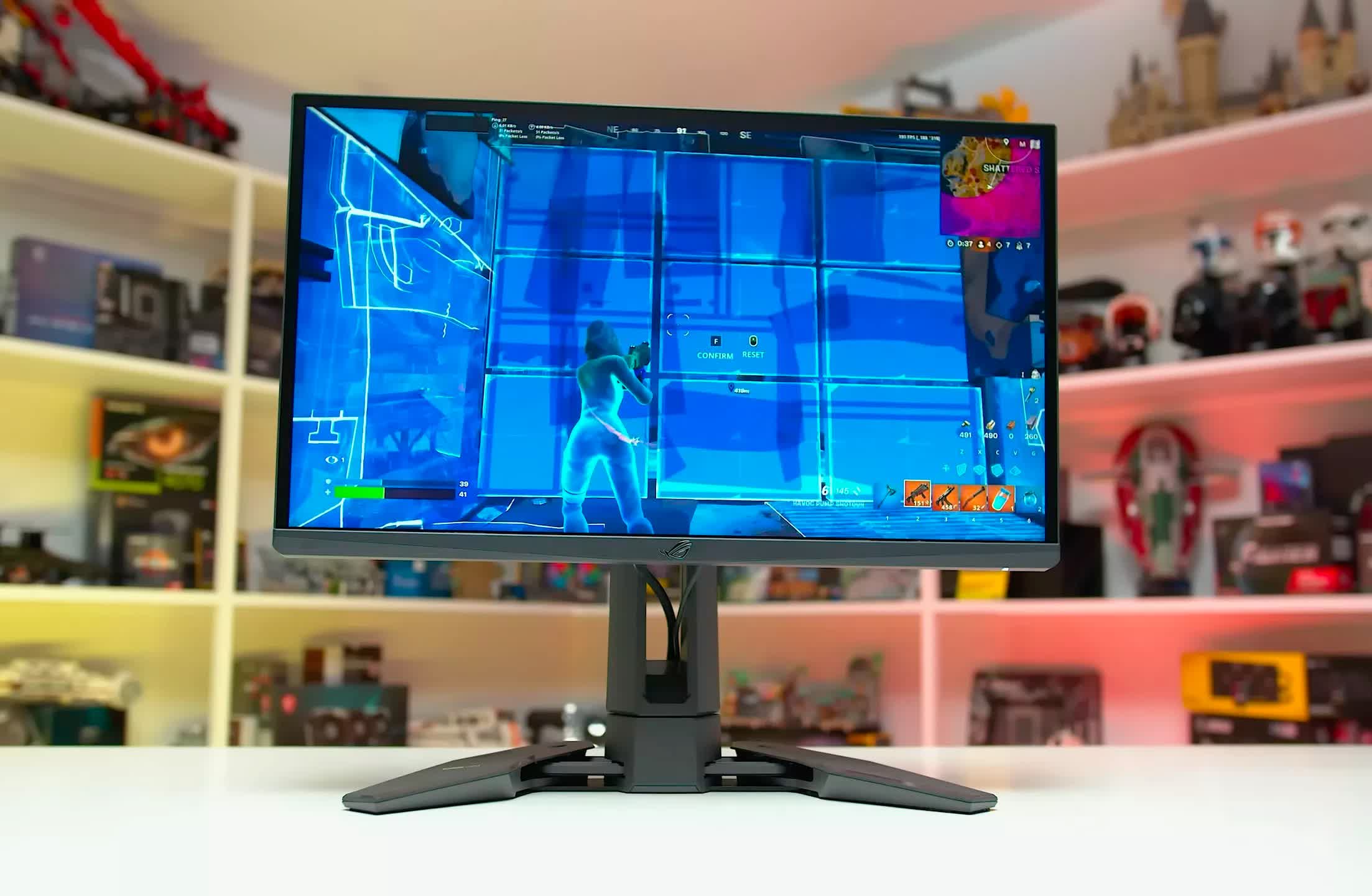
In addition to the high refresh rate, the PG248QP boasts the fastest reaction times we’ve determined on an LCD panel. It considerably exceeds previous leaders in this classification, like the BenQ XL2566K, providing an exceptional, quick, low overshoot experience at all refresh rates.
It’s more than capable of dealing with 540Hz, it’s elite at lower refresh rates and it has low input latency. Presently, just OLED panels are much faster, however with OLEDs maxing out at 240Hz, you get remarkable movement clearness from a 540Hz LCD.
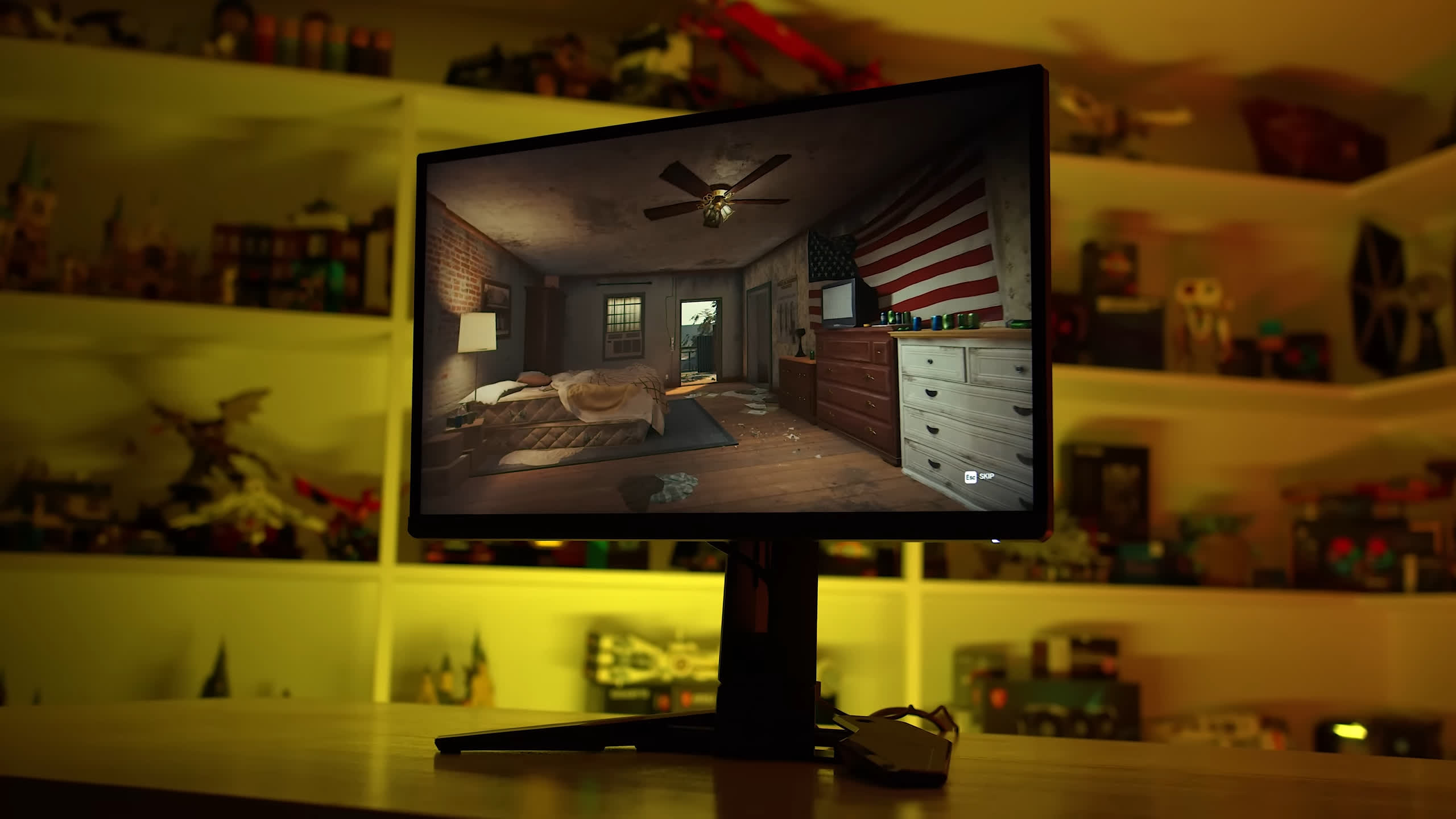
Asus matches this with ULMB2, which provides the very best movement clearness we’ve seen on this 540Hz panel, making the PG248QP the leading option for both strobed and non-strobed clearness. This function’s constraint at lower refresh rates like 240Hz or 144Hz is a small problem, however we think anybody buying this display screen is intending to dip into or above 500 FPS– which is possible in some multiplayer video games supplied you have effective PC hardware.
I was likewise happily shocked by some elements to image quality, including its great contrast ratio, broad range assistance and terrific factory calibration. The bad watching angles, a quality of TN panels, frequently nullify these advantages. Unless seen head-on, you’re most likely to experience a more rinsed image, so it’s tough to suggest it for anything aside from its speed and movement efficiency.
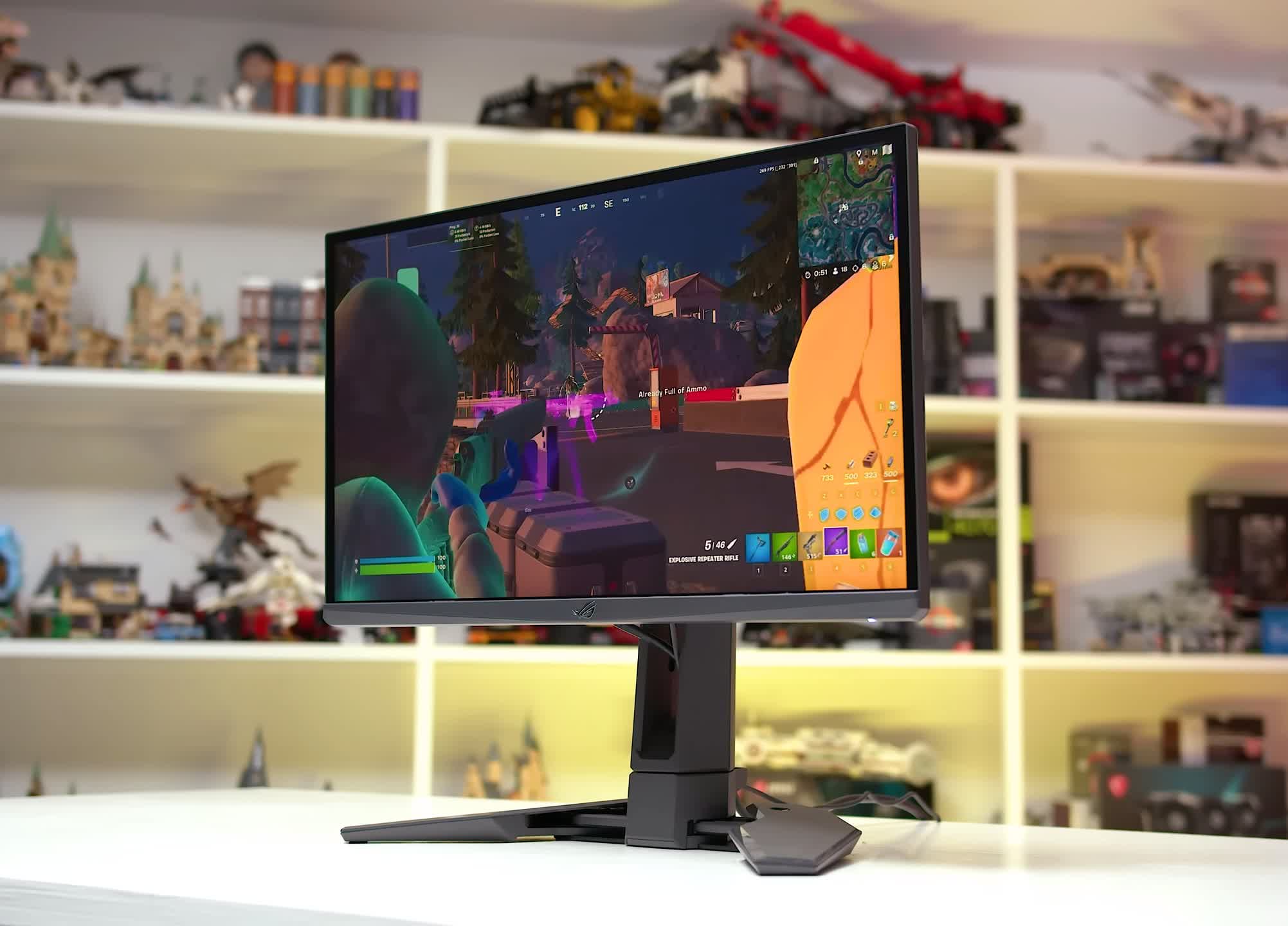
While the image clearness is excellent, the PG248QP feels more like a look into the future of screen innovations. Priced at $900, it’s challenging to suggest to the typical player. Even for those looking for a premium esports keep an eye on, the cost is high, relegating it to a specific niche market.
It goes beyond the BenQ XL2566K in efficiency, the BenQ’s $600 rate tag– currently high for a 1080p display in 2023– makes it a more appealing choice for lots of, specifically for players interested in backlight strobing where the PG248QP uses just a small enhancement. Our company believe the Asus ROG Swift Pro PG248QP ought to be priced no greater than the present XL2566K, triggering a rate decrease for the BenQ. That would most likely lure a part of the esports crowd to consider it. At $900 though, enjoy this check out what will be available in the future, however maybe await that future to get here instead of leaping in today.
Shopping Shortcuts:
- Asus ROG Swift Pro PG248QP on Amazon
- BenQ Zowie XL2566K on Amazon
- Asus ROG Swift PG27AQN on Amazon
- Samsung Odyssey OLED G8 on Amazon
- Alienware AW3423DW 34″ QD-OLED on Amazon
- LG C2 42″ OLED Television on Amazon
- Asus ROG Swift PG32UQX on Amazon
